Welcome to another digital dentistry review.
This time we are going to change course from scanners, 3D printers and CAD/CAM and explore the world of digital spectrophotometers and shade-matching units.
Let's talk about one of the newest devices on the block - the BOREA Cobra Shade Scan.
Watch the full unboxing experience below.
Shade-matching units are an interesting category. The first one that comes to your mind is likely the VITA Easyshade, as that was the most popular product in this category. However, in all honesty, I never really saw that device take off. It seems like few people love it and others really dislike it.
One interesting fact about the VITA Easyshade is that the company released it in 2012. Think about that. 2012.
The release of the VITA Easyshade in 2012 coincided with the release of the original TRIOS 1 and CEREC Omnicam. There were only 3 scanners available in the market. Digital dentistry was in its infancy.
Yes, it has been that long and, after all these years, this shade-matching device market has not really moved much. We saw some updates to the VITA product but we haven't really seen any other company enter the space in a major way.
There are a few other shade-matching products like the X-Rite ShadePilot, SpectroShade, Shofu ShadeEye, Crystaleye or, most recently, the OptiShade. But they look like this - enough said?
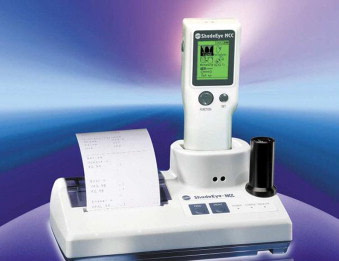
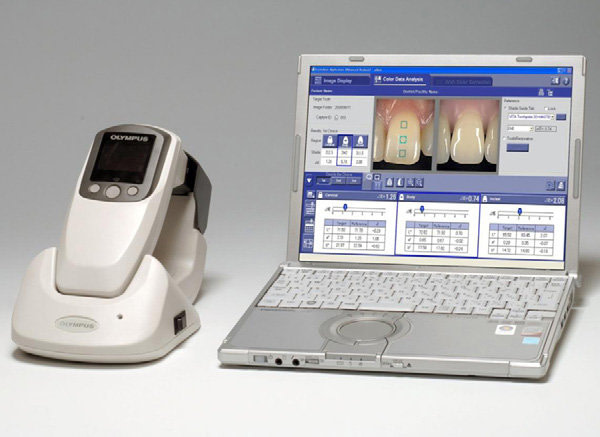
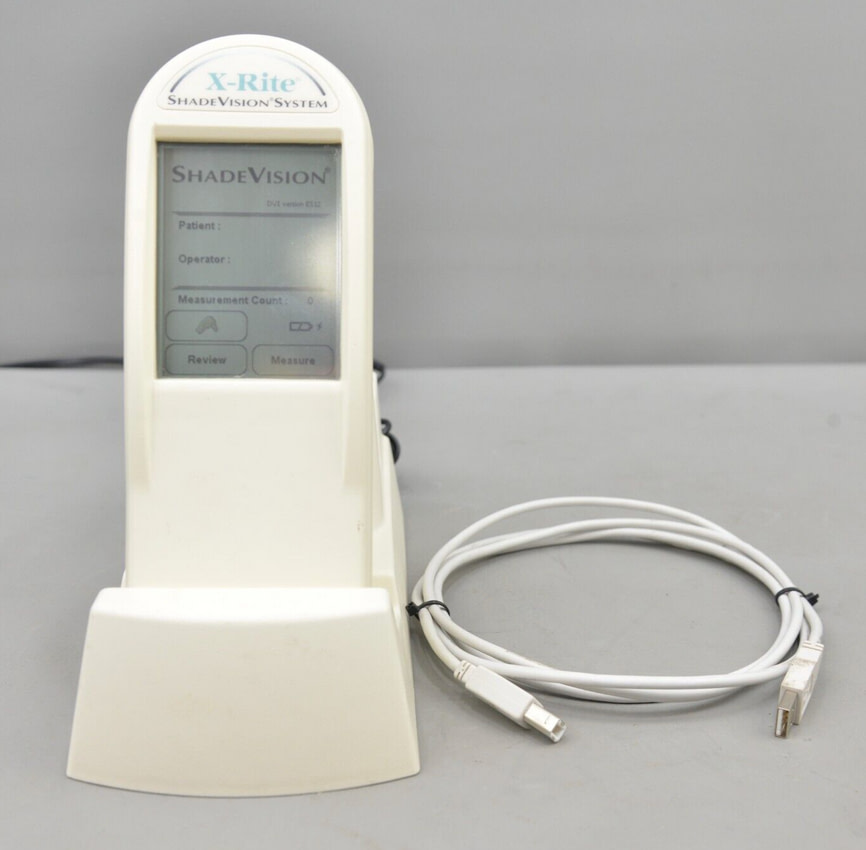
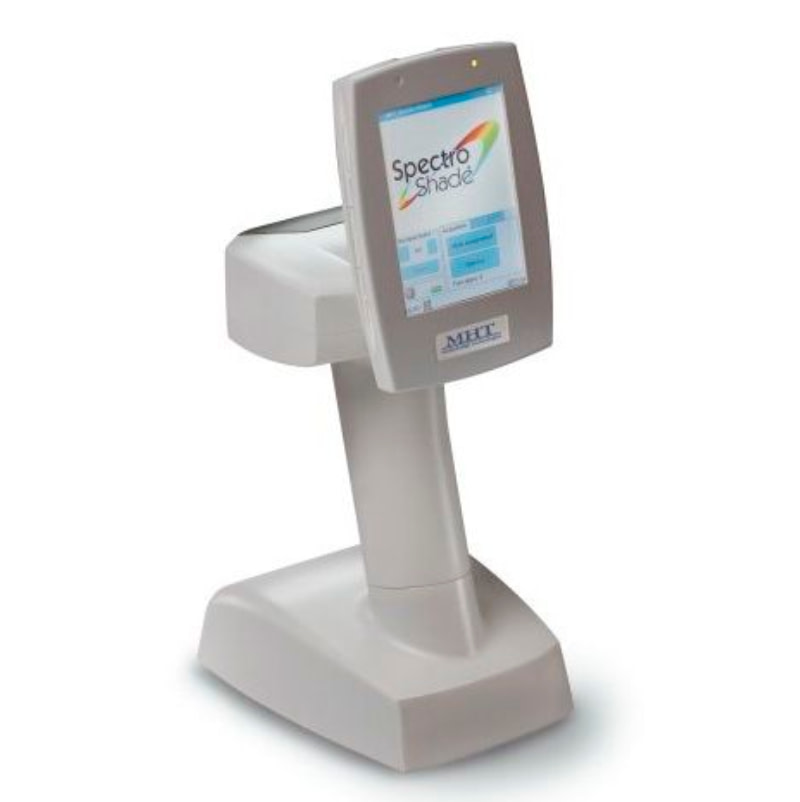
Intraoral scanner companies actually began offering shade-matching before any other 'modern' standalone device came out.
You can find 'shade-matching' features in the likes of Primescan, Medit, TRIOS and DEXIS scanners. But again, I never really saw these features become widely popular, nor do IOS companies seem to advertise / develop them too much.
Fast forward to 2024. The BOREA Cobra is a device designed primarily for efficient and precise tooth shade measurement, potentially enhancing the aesthetic outcomes in restorative dentistry. It has a strong digital dentistry focus and one of the biggest strengths I see of it is the software and workflow.
So how does the BOREA work? Is it any good? How does it compare to the VITA Easyshade? Let's find out!
You will notice me referring to the Easyshade in the review, as it is the only other specific shade-matching tool I know of that is popular. I was using both in this review and also testing these devices compared to IOS shade-matching.
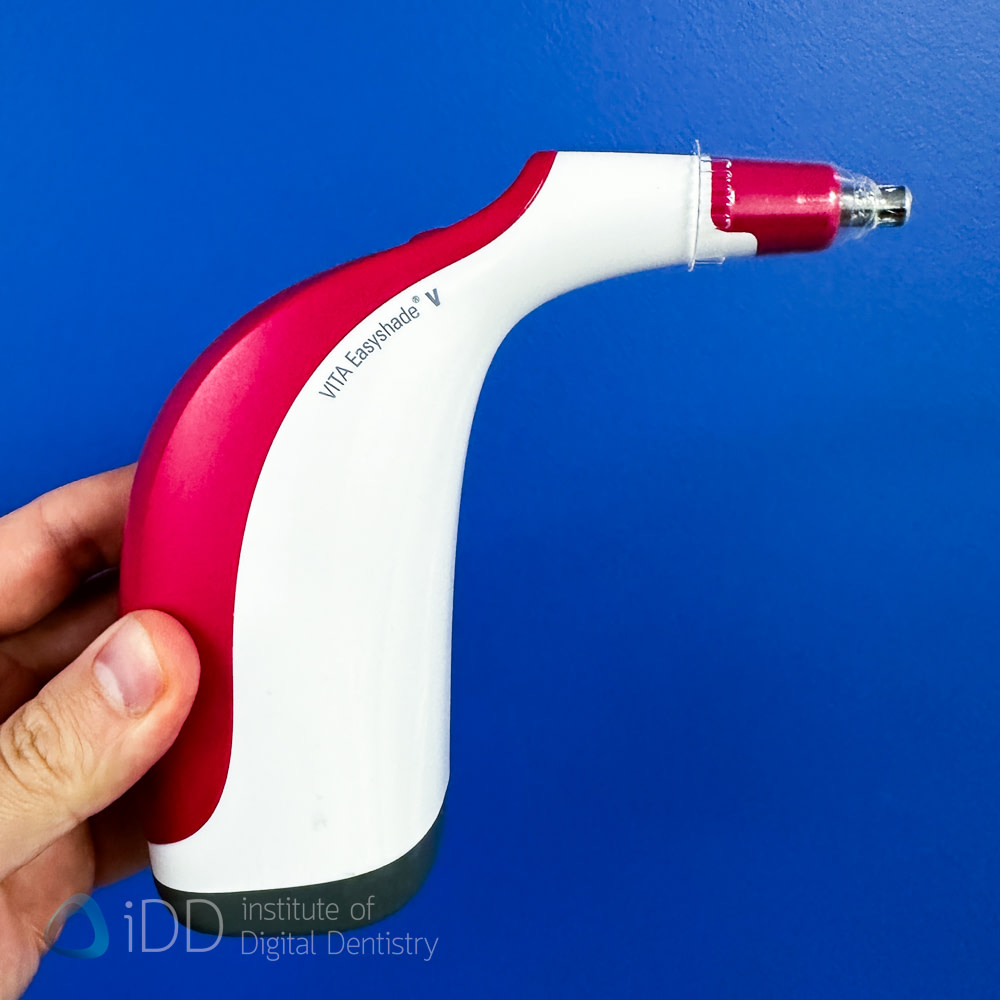
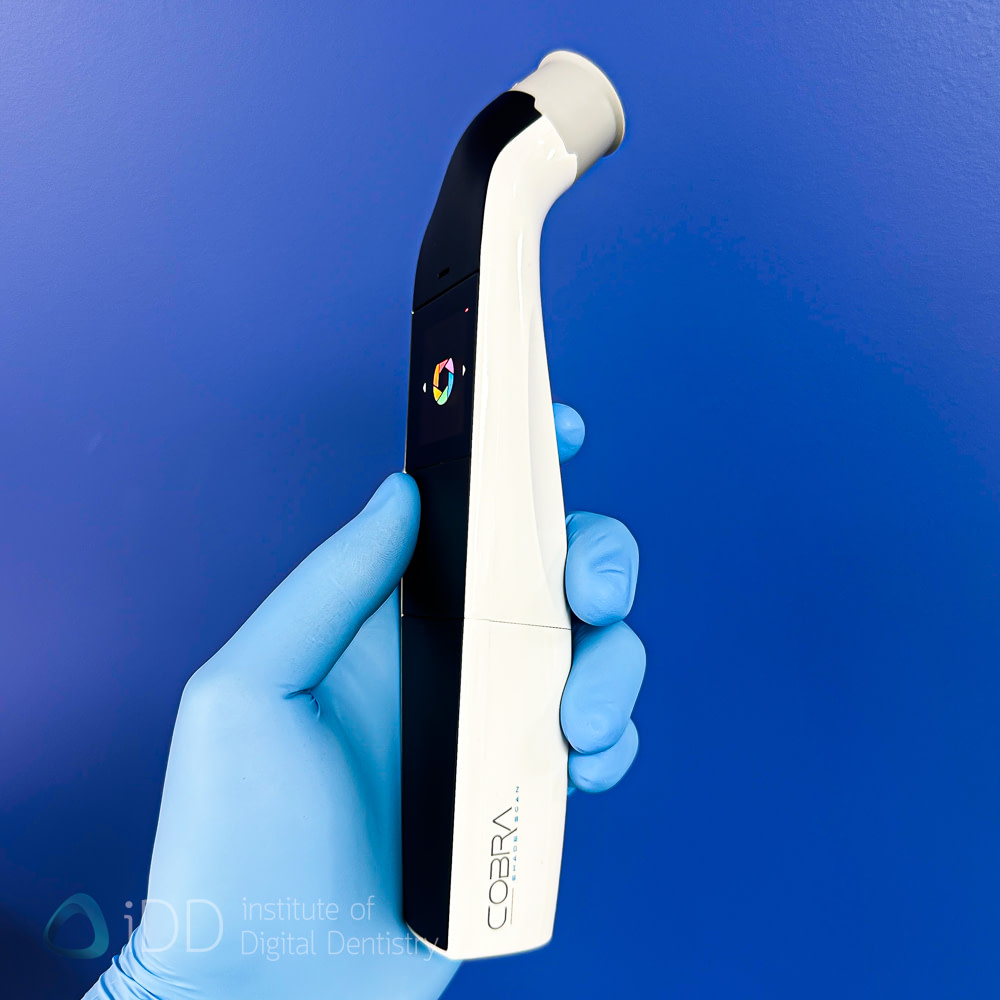
VITA Easyshade and BOREA Cobra
BOREA Company Background
BOREA was founded in 2013. The company says they emerged from a desire to enhance the efficiency and accuracy of dental procedures, particularly in shade matching. Their focus has been on integrating advanced optical technologies to improve clinical outcomes.
BOREA is based in France, where it develops and manufactures its products. They aim to provide dental professionals with tools that enhance precision and efficiency in their practices. Besides the Cobra, they also produce the 'Vision Software' which is used to perform colorimetric analyses and optimize your patient data management.
The BOREA Cobra
The BOREA Cobra is their latest shade matching tool and I have to say it looks much more modern than the VITA Easyshade. It has a good build quality and a simple design - one button that turns it on and off and is used to take the shade.
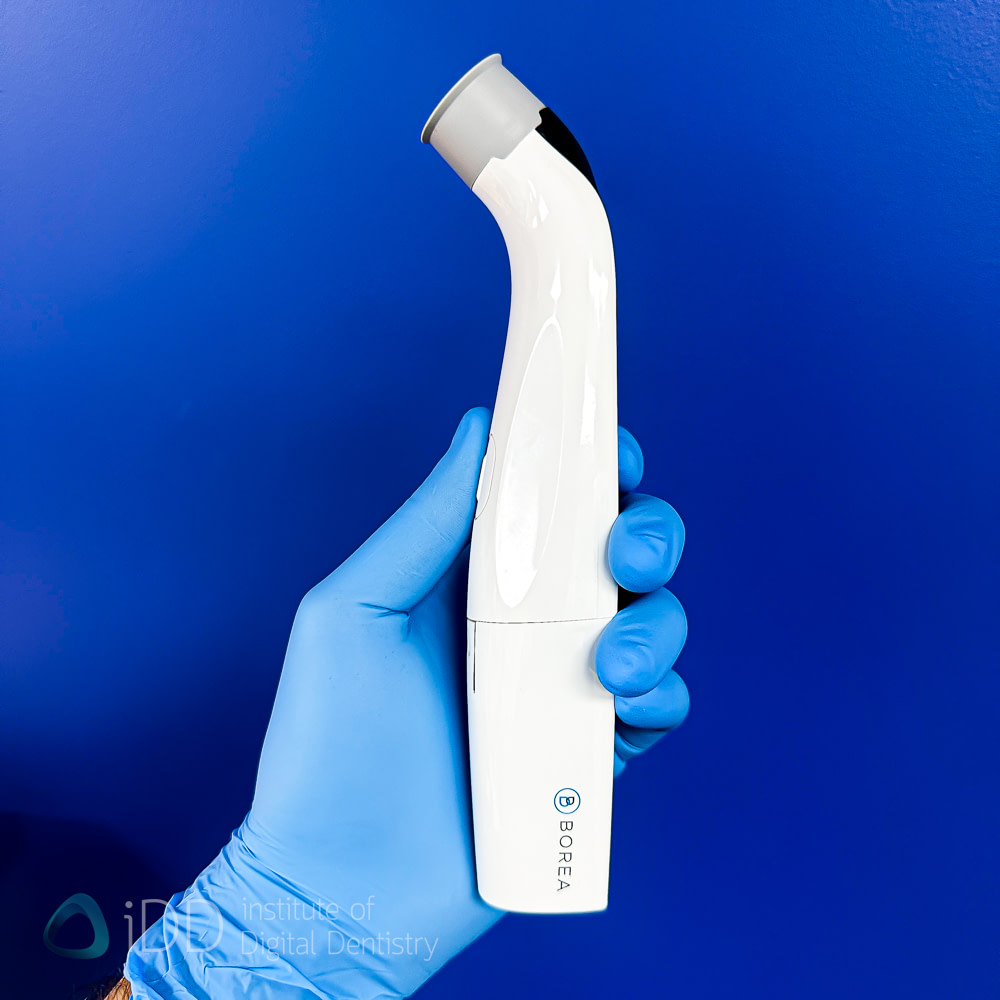
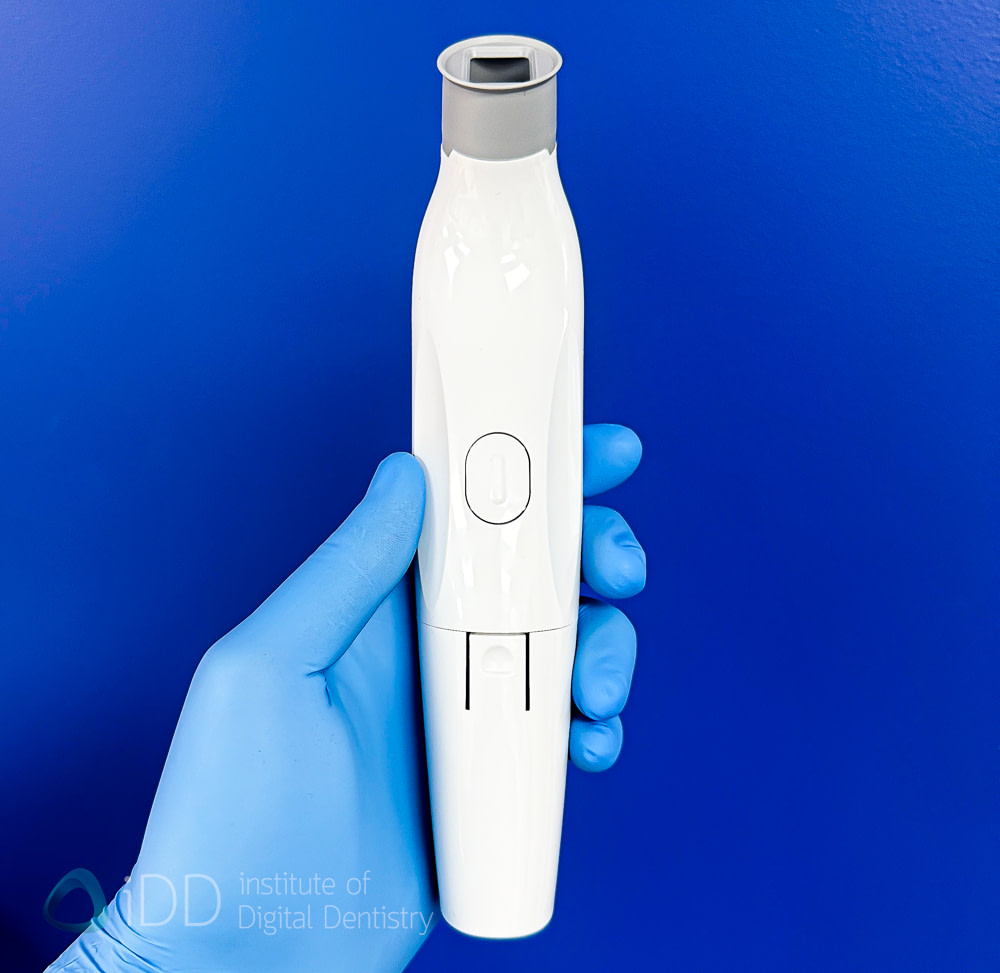

The BOREA Cobra weights 169 grams and is 200 mm x 42 mm x 35 mm in dimensions, making it very portable, similar to the Easyshade. It has a sterilizable tip that clips on and off (autoclavable up to 100 times) and sits securely on the top of the device. This clip also works quite well to retract the lips when taking a shade.
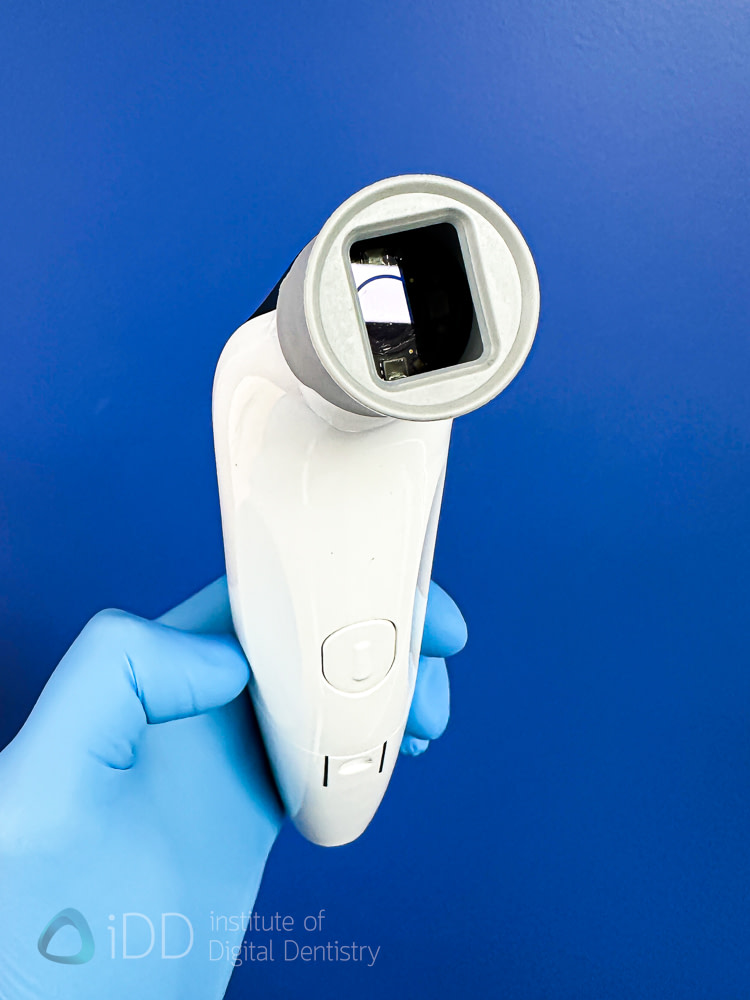
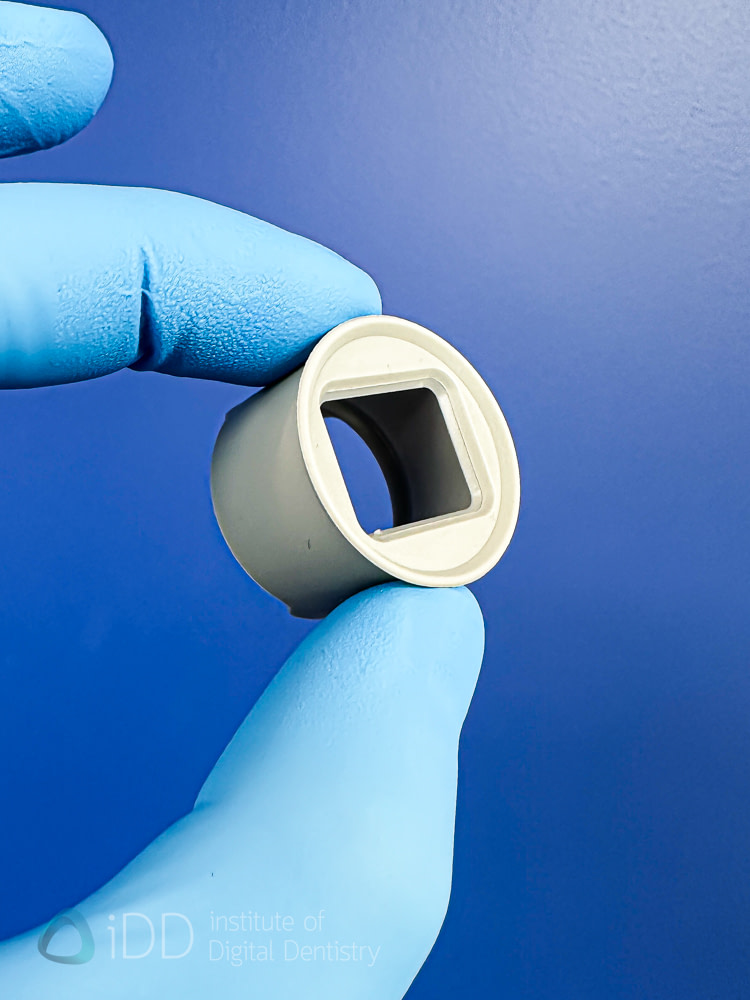
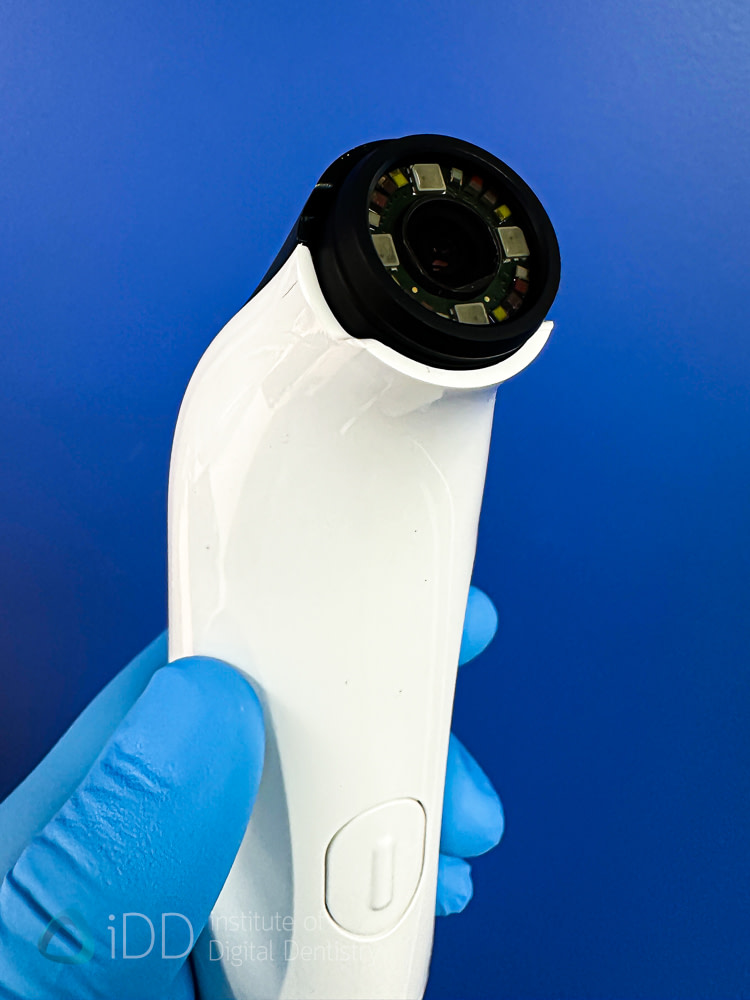
The device uses a rechargeable lithium-ion battery with what seemed to last over 3 hours of operational time on a full charge. Given how quick taking a shade is, it is ample battery life. The device also automatically turns off if not used for a few minutes, which is a great addition and may seem simple, but not seen in some wireless intraoral scanners which just run until they are dead.
The Cobra comes with a docking station that charges its battery when you place it inside. Instead of requiring a power cable, it conveniently charges with just a USB connection to your computer.
The device overall looks modern, slick and the mounting cradle itself also looks good. It lights up with a blue LED when charging. Overall, a nicely designed device.
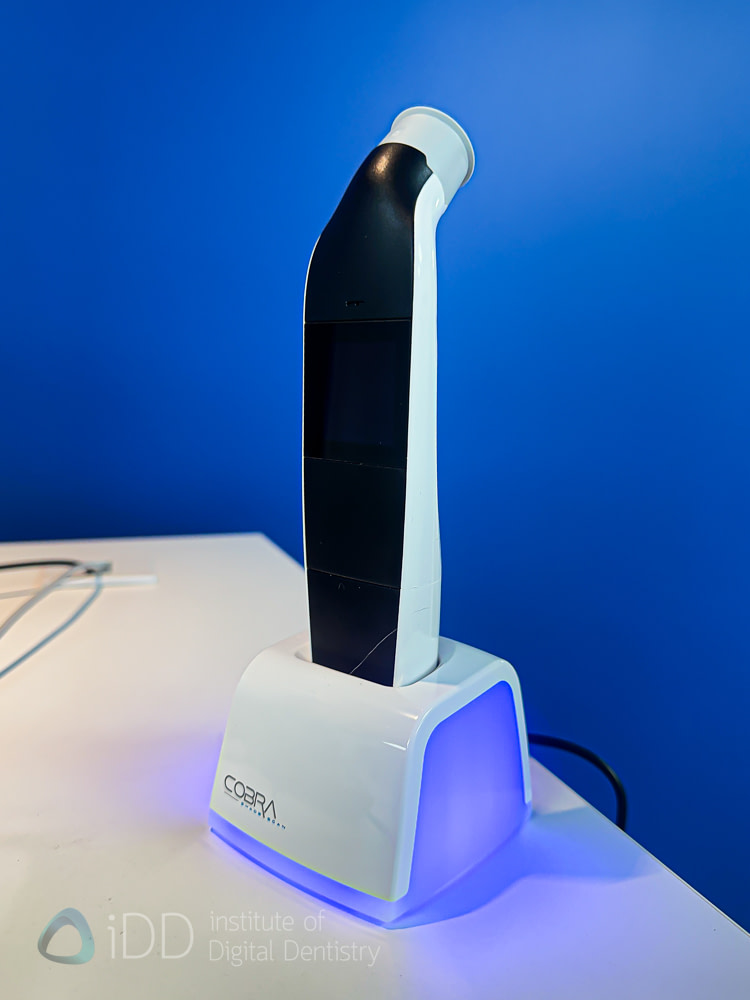
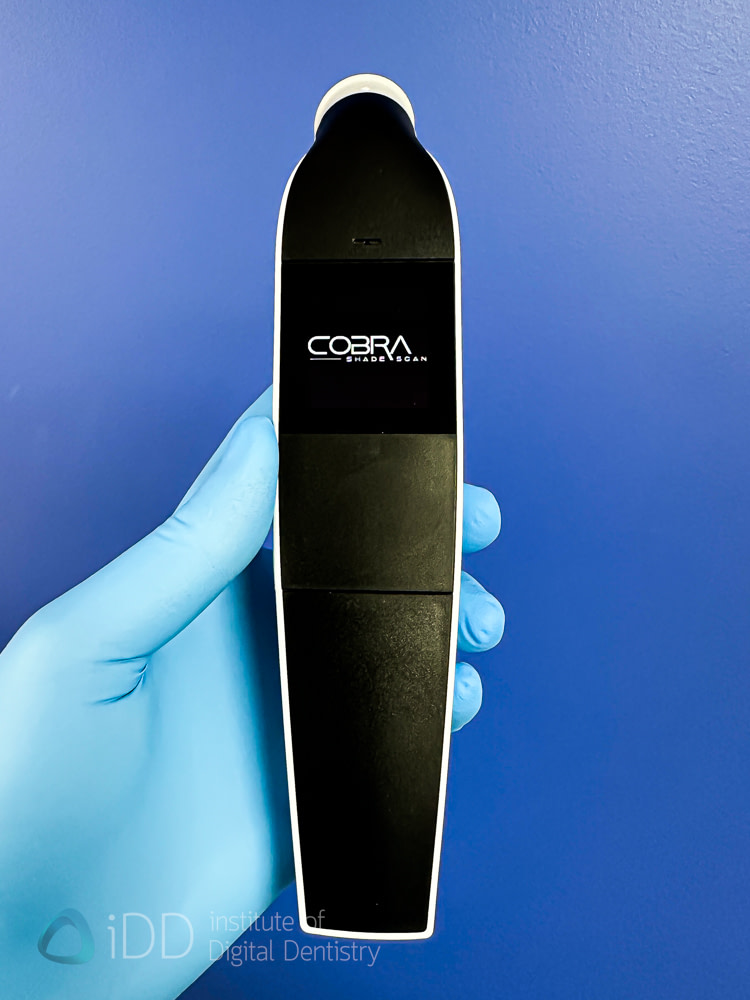
One pleasant feature about the BOREA Cobra when compared to the VITA Easyshade is the high-resolution touchscreen for easy navigation. This screen on the front of the device also provides a live video view when shade-taking to help you position the Cobra in the right place before clicking the button to capture the image.
Note that the shade measurement result itself does not show up on the Cobra's screen; the software, which is required to operate the Cobra, displays the measurement. However, once connected, the Cobra will automatically and wirelessly send it to the software for shade reading. The device connects to the software via a USB Wi-Fi dongle included in the box.
Not considering the capabilities of shade-matching itself, this 1.5 inch OLED display is the most obvious advantage of the Borea device in terms of physical hardware over other competitors. I really like how it shows a live view which greatly improves usability.
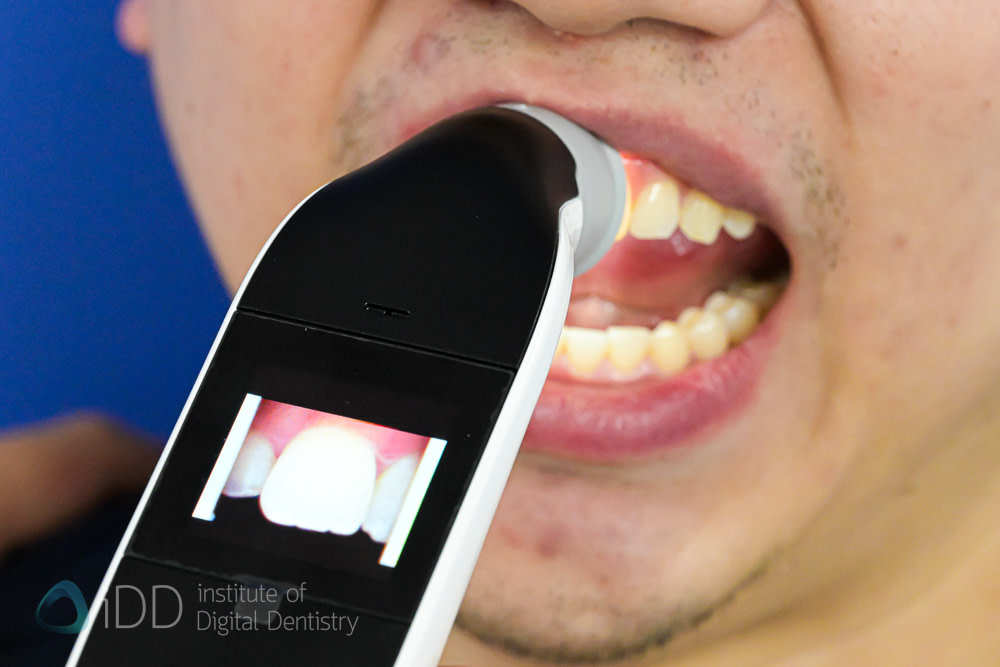
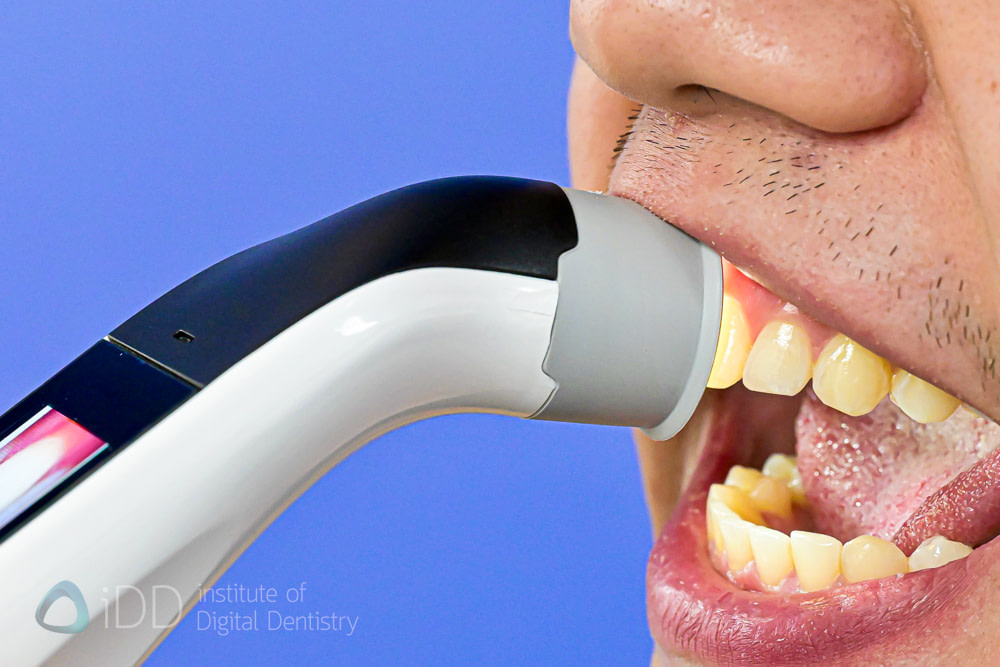
Taking a shade with the BOREA Cobra
This screen has some basic navigation tools and is used to connect the device to the software. I will say that the touch screen is not the best in terms of responsiveness to gestures. Thankfully, after connection you hardly use it apart from taking shades - the live view works very well with minimal lag. The OLED screen on the Cobra device is high res and clear, showing you a good preview of what you are pointing it.
For example, when comparing it to the VITA Easyshade, this device is showing its age a little. I find it strange that the screen for the Easyshade is on the bottom of the device, meaning you constantly have to turn the device upside down to navigate the UI. Although the Easyshade gives you the readings on the device itself.
The other big advantage of the BOREA Cobra is the software is much better than other competitors, but more on that below.
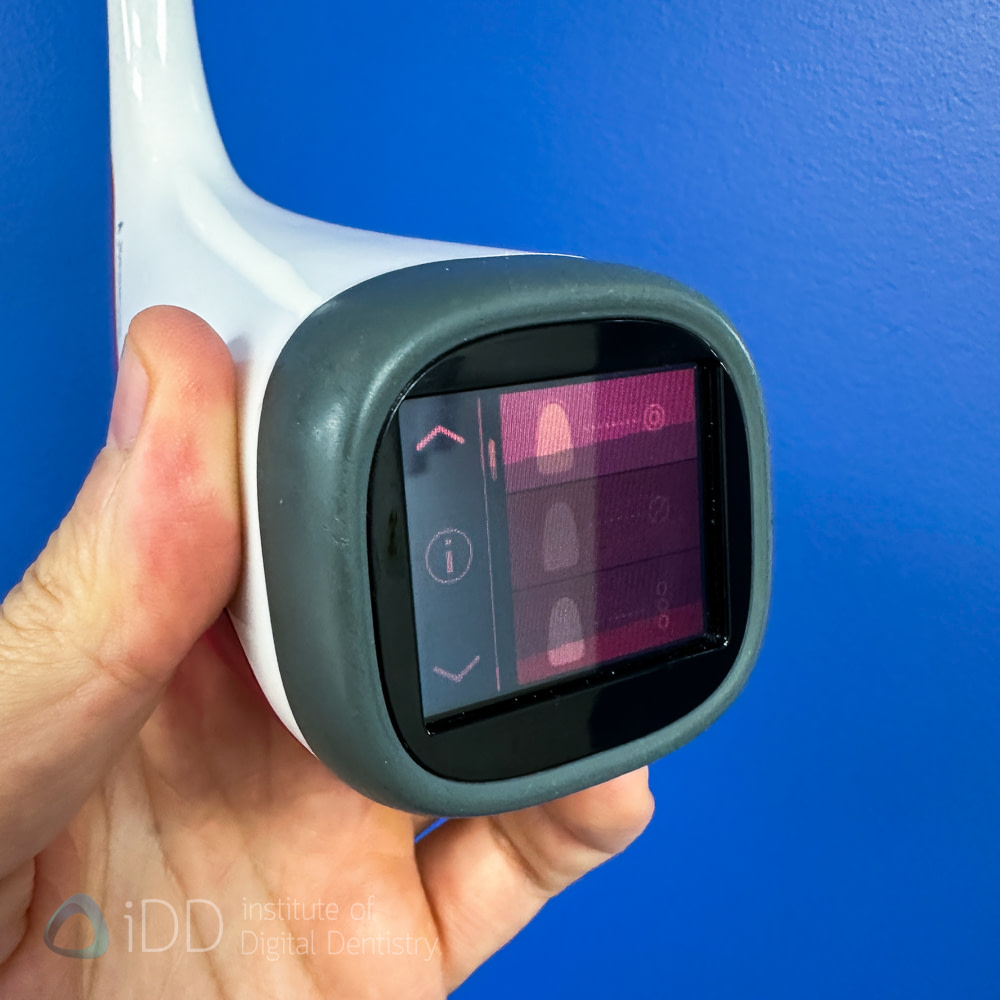
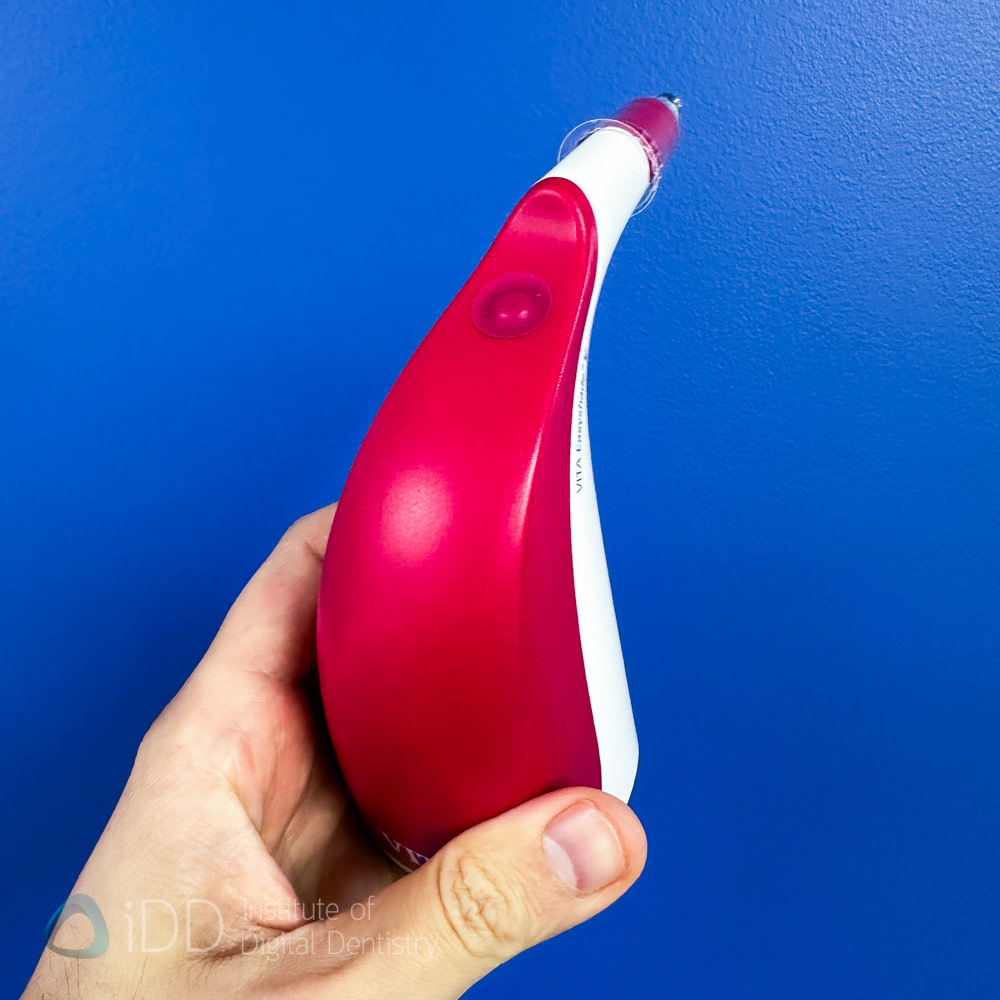
How It Works:
- Connect: Turn on the device and connect it to the software. Wi-Fi dongle included for connection.
- Positioning: Place the device against the tooth surface to be measured.
- Measurement: It emits LED light that reflects off the tooth. The sensors capture this reflected light.
- Data Analysis: The device analyzes the captured light and compares it to its internal database of dental shades.
- Results Display: The screen displays the closest shade match.
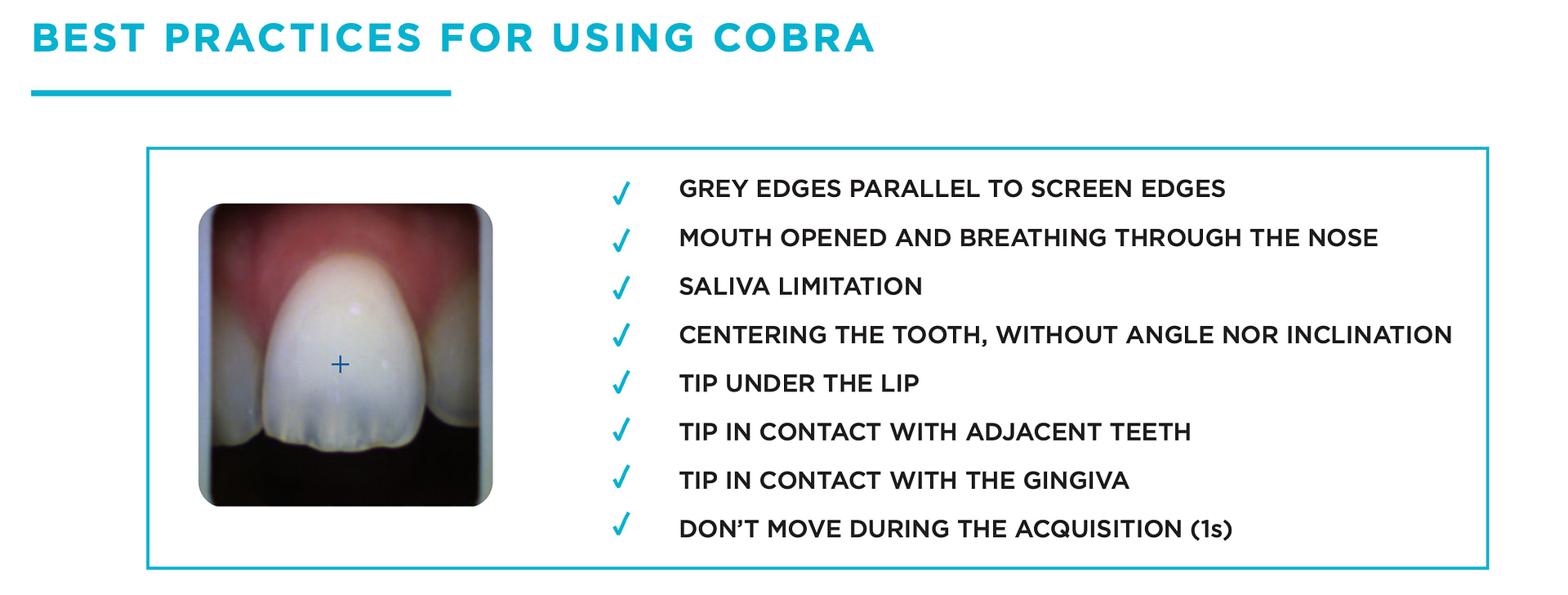
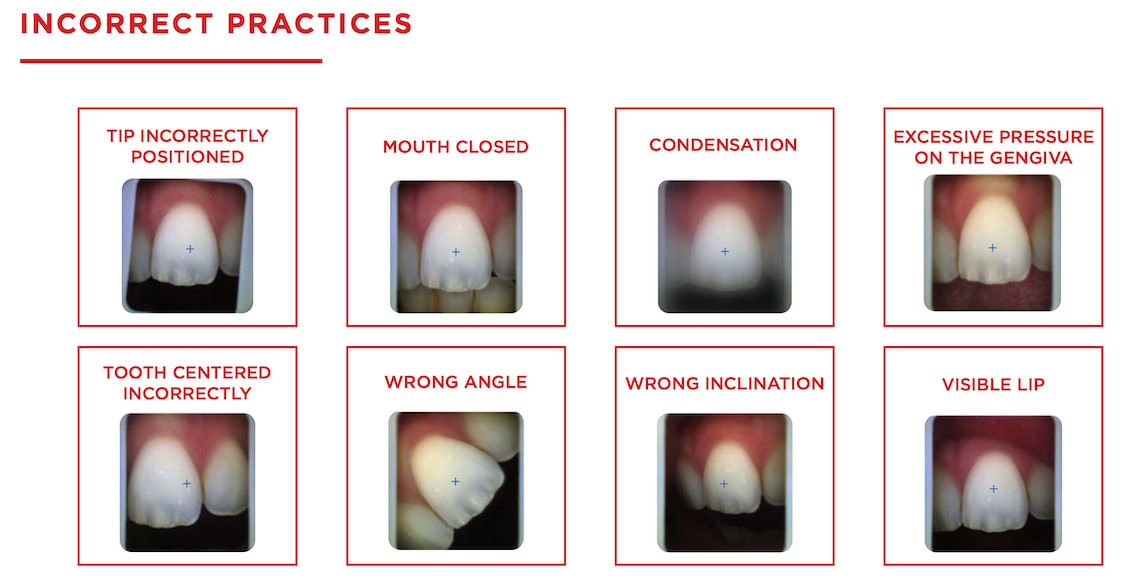
The Cobra works by utilizing LED technology for what seemed to be very consistent and usually quite accurate shade measurement. Although not 100% perfect, it seemed to get it right most of the time. The only 'mistakes' I found was when scanning a shade guide itself, and even then it got it right about 95% of the time.
So pretty impressive and much better than any shade-detection built into intraoral scanners that I have tested.
The software can assess a wide range of shades, and notably, it is compatible with different dental shade guides. Not just the VITA shade guides like the Easyshade.
The Borea can instantly convert the captured shade into different reference shade guides, such as:
- VITA classical A1-D4
- VITA Toothguide 3D-MASTER with Bleached Shades
- VITA Bleachedguide 3D-MASTER
- IVOCLAR Chromascop
- SHOFU Vintage
- KURARAY Noritake
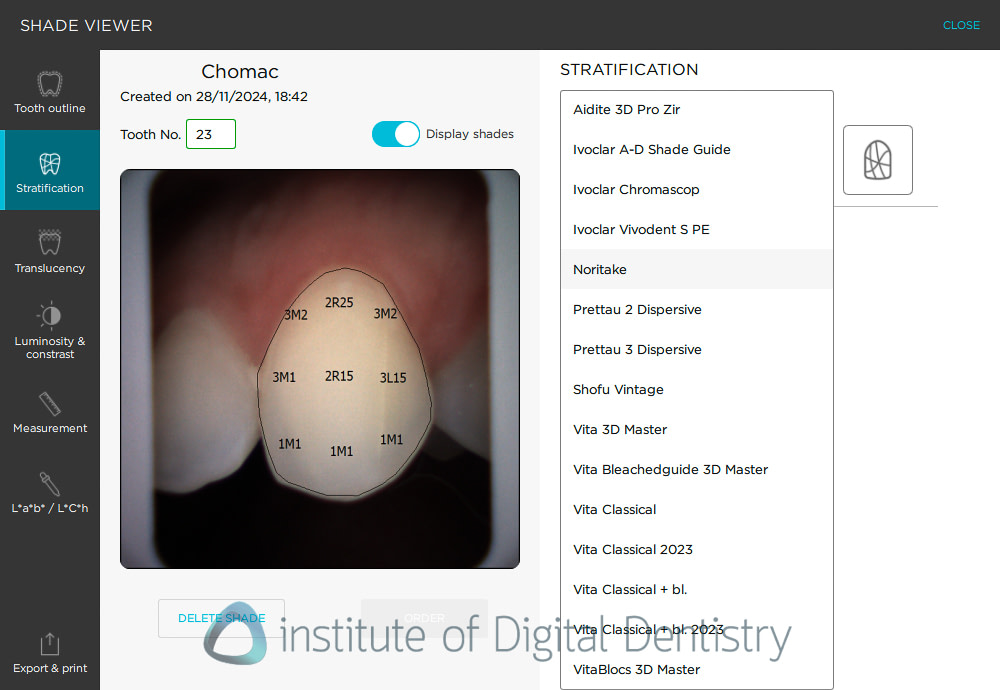
After taking a shade, the Borea Cobra also has a few really cool features that make it stand out - measurement modes:
- Single Tooth Measurement: quick assessment of individual teeth.
- Shade Guide Comparison: ability to compare against standard shade guides for a reference match.
- Multi-Measurement Capability: stratification of shades in multiple ways shown below
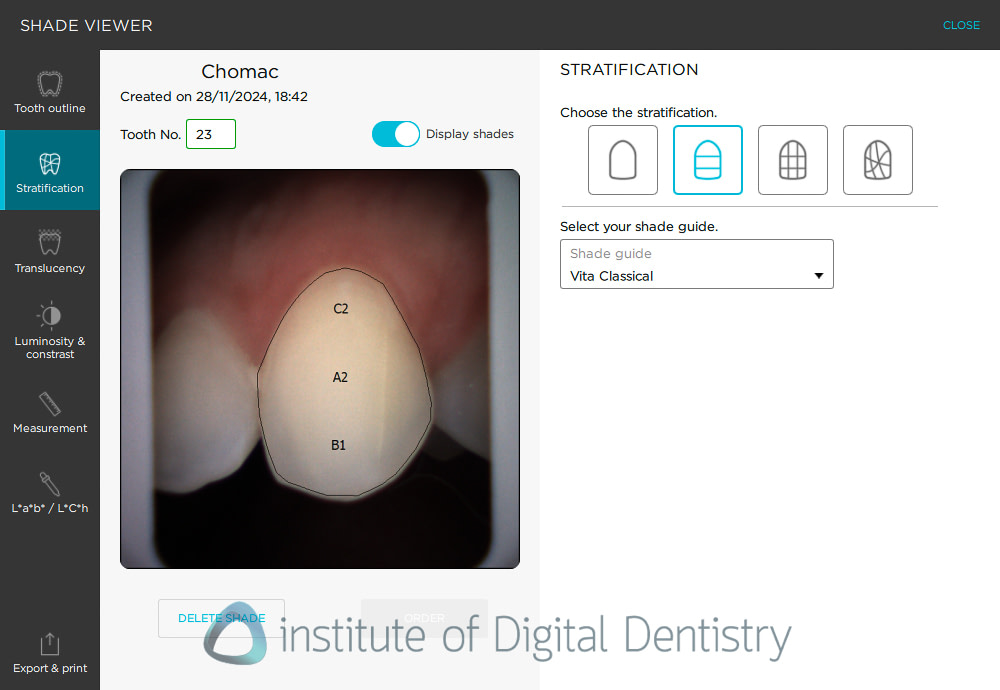
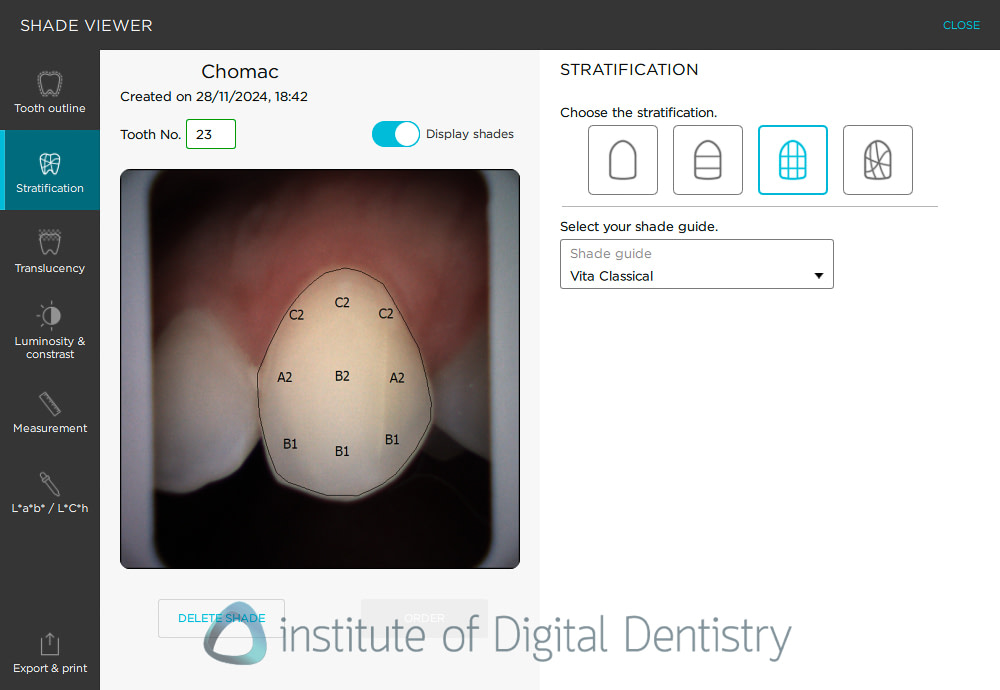
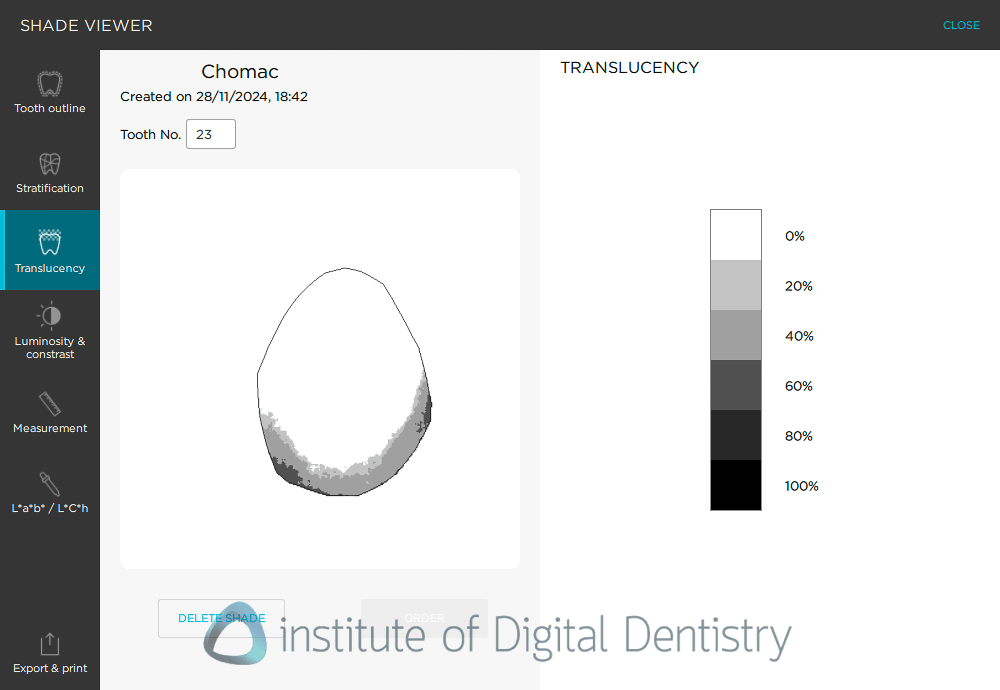
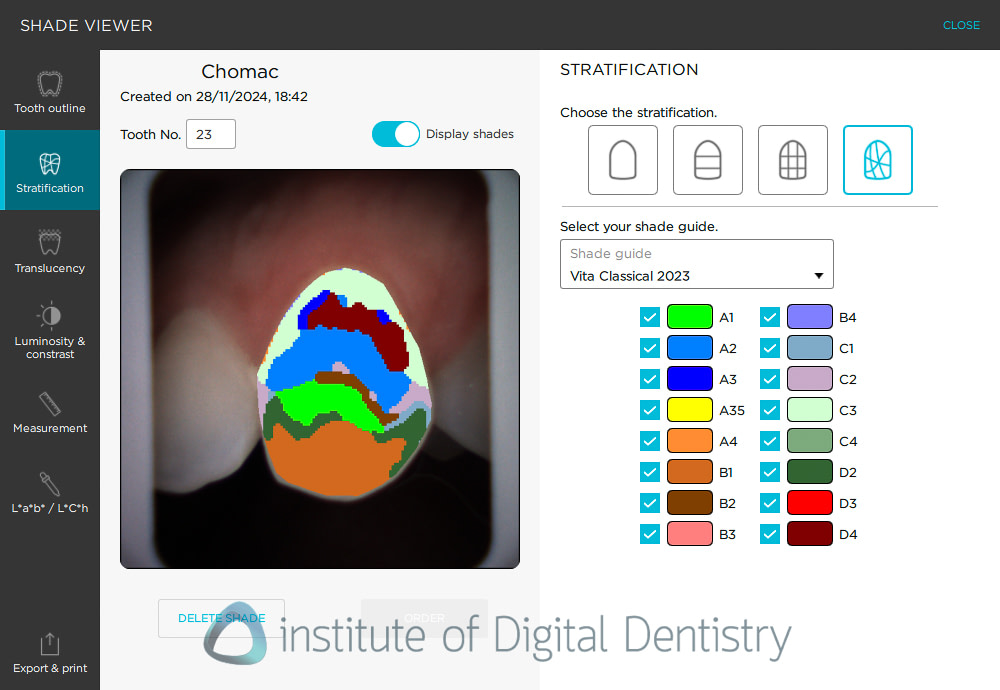
The Cobra spectrophotometer enables the acquisition of spectral data over the entire tooth. This is an enormous advantage of this device compared to other shade-matching devices, which often capture shade on a single point. Because it captures shades across the entire tooth, this gives a significantly better representation and more detailed info to the lab, in my opinion. Much better than capturing 3 arbitrary points from the cervical zenith of the tooth to the incisal edge.
When placing the Cobra on a tooth, the software analyzes the wavelengths of light reflected and then compares them to a database to deduce the color of the tooth. It only takes a few seconds to take a shade using the Cobra. Point and shoot. Animations on the OLED screen show you when the data has been transferred to the computer.
Each acquisition is totally safe for the patient involving nothing but light and is polarized to help reduce reflection issues.
The other cool thing is that the Cobra does not need calibration because it calibrates itself using the scanning tip during each capture. (Look at the image above and you'll see the grey borders left and right of the screen - the Cobra uses these borders for calibration).
CIELAB color space used by BOREA
To nerd out a little, let's discuss in some detail how all this works. The Cobra uses the CIELAB color space, also referred to as L*a*b*.
CIELAB coordinates are a colorimetric standard defined by the Commission Internationale de l’Eclairage (CIE) in 1976. It allows a multitude of functionalities and standardized communication with the laboratory.
This space expresses the color in three values :
- L* for the brightness indicated between black (0) and white (100)
- a* from green (-) to red (+)
- b* from blue (-) to yellow (+)
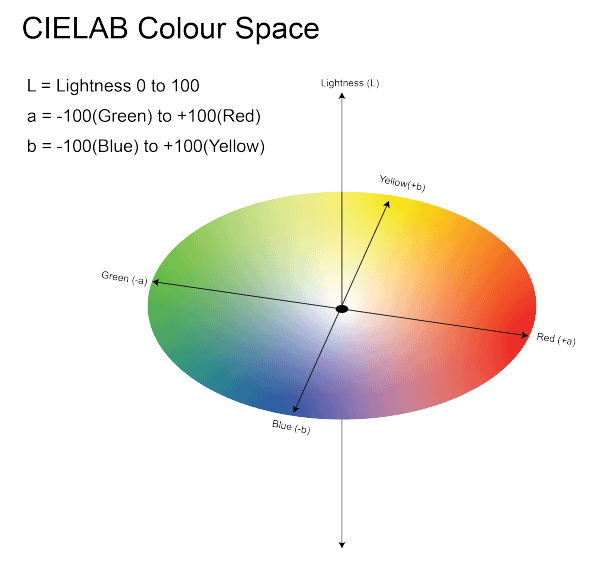
Based on a three-dimensional representation, the CIELAB system allows a more precise description of colors. It also makes it easier to quantify color deviations or to dissociate and examine the luminosity of a color. For each acquisition, BOREA measures the L*a*b* / L*c*h values of the tooth.
Colorimeters and spectrophotometers are the two types of color measurement instruments used to capture, analyze, and communicate color. Confusion exists among many users and health professionals between spectrophotometry and colorimetry, so here is a summary:
Both colorimeters and spectrophotometers measure the color of a sample, but they differ in how they do it and their accuracy:
Colorimeter:
- Simpler device used to measure the intensity of colors.
- Works by shining light through a sample and comparing the color to standard filters (usually three: red, green, and blue).
- Good for basic color matching tasks.
- Less precise—it measures color as a whole but doesn't provide detailed information about the different wavelengths of light.
Spectrophotometer:
- More advanced and accurate device.
- Measures the intensity of light across a wider range of wavelengths (spectra).
- Breaks light into its component wavelengths to give a detailed profile of the color.
- Used in detailed scientific applications like analyzing materials or precise color matching.
The fundamental difference is a colorimeter is a basic color comparison (like matching paint). A spectrophotometer is more of a detailed analysis of color, providing deeper insights (like measuring exact shades and color consistency).
Most intraoral scanners use colorimetric measuring. A published piece of literature concluded that "intraoral scanners can be unreliable because they have a narrow choice of colors an yield results that are significantly different from those of spectrophotometers." And I would have to agree personally, I don't feel like I can rely on IOS shade matching. The BOREA device certainly gives me a lot more confidence in it.
How does a spectrophotometer work?
- An internal light source emits at different wavelengths to represent the entire color spectrum.
- Each LED representing a specific wavelength of the spectrum and emits one after the other to diffuse the light on the tooth.
- Under each emission wavelength, the sensor measures the light intensity and the absorbance of the analyzed tooth.
- A comparison algorithm which compares the information collected with the spectral signatures of the various previously recorded shade guides then analyzes the data collected.
- The spectrophotometer displays this information in digital form.
This is how the BOREA Cobra works. It is a spectrophotometer and has a measuring range 400-700 nm.
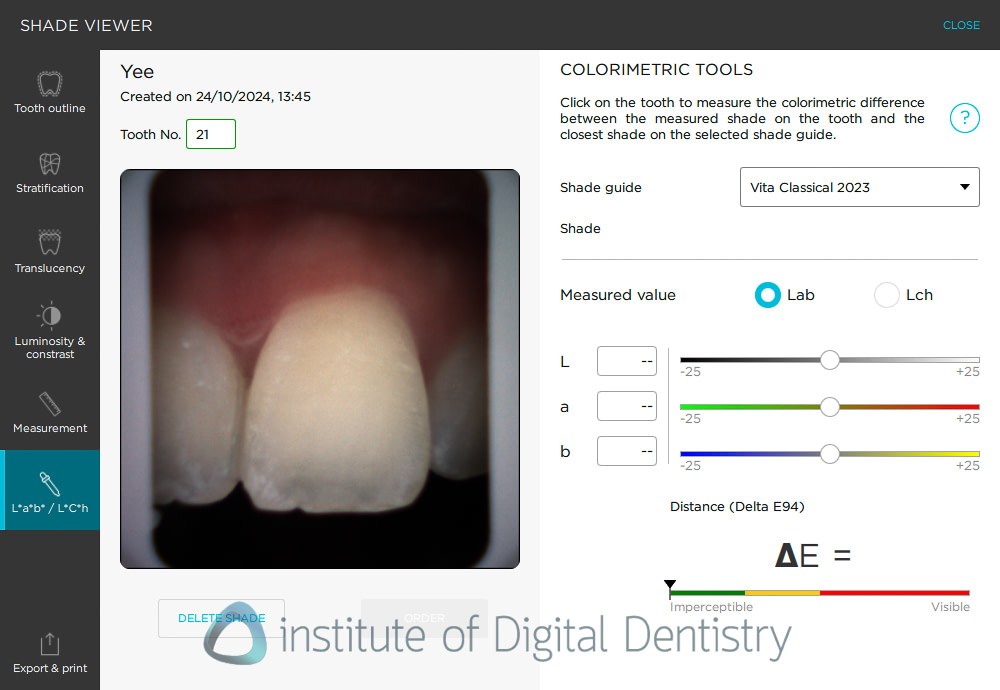
BOREA Cobra software called VISION
The software that runs the Cobra is called VISION. It allows for capturing, analysis and archiving shades obtained with the Cobra. It is required to use the device - you cannot take shades without connecting the Cobra to the software via the Wi-Fi dongle included.
The BOREA software automatically receives any shade reading taken and can be used to create a patient file for storage. Much like intraoral scanner software.
This is a much better way of storing the data and when comparing this to the VITA Easyshade, which primarily shows the shade on the device itself. This feels like a more modern take on shade-taking. (I am aware a VITA app exists to store the files or you can use a desktop VITA software, but these look quite dated too).
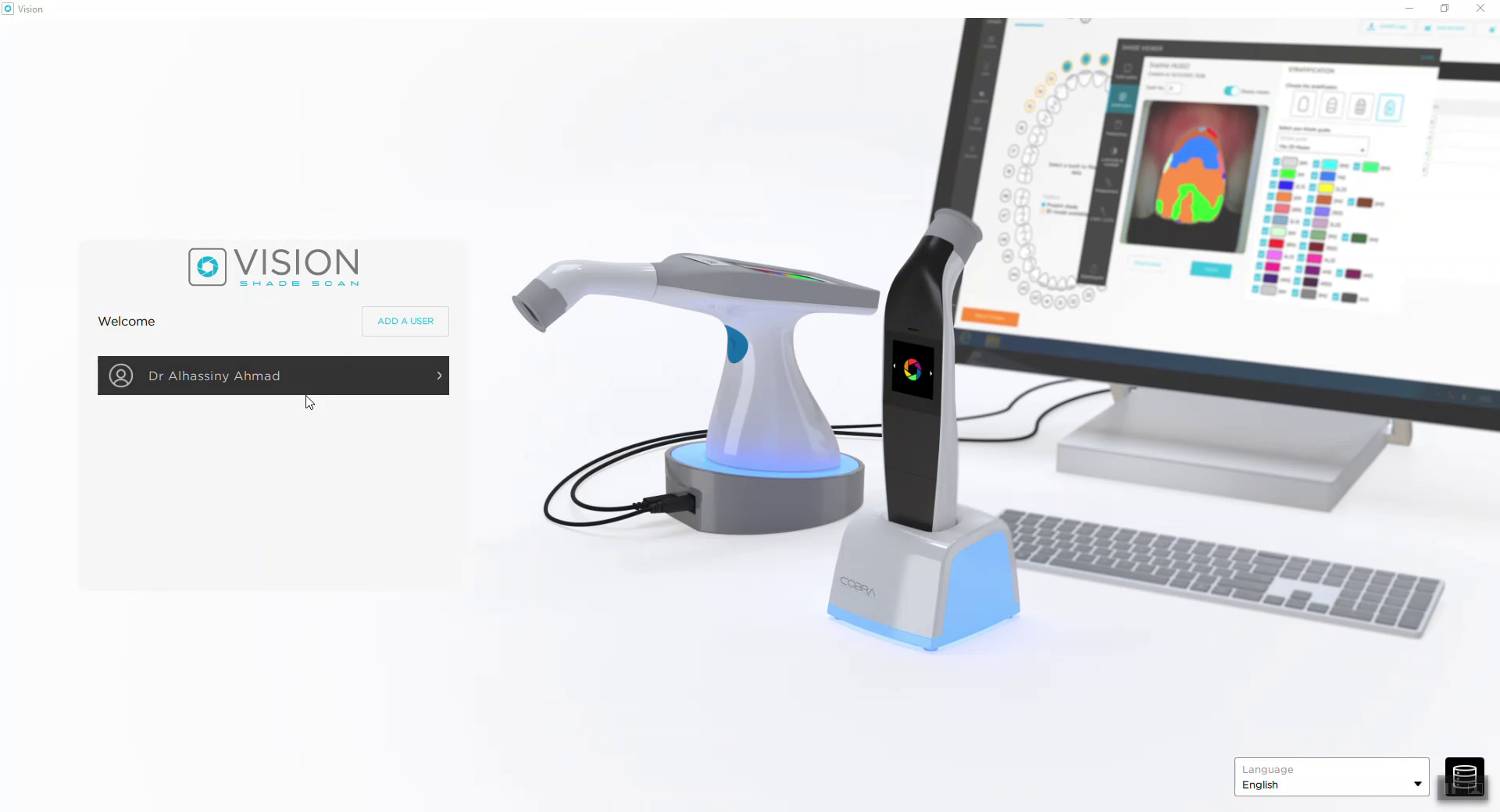
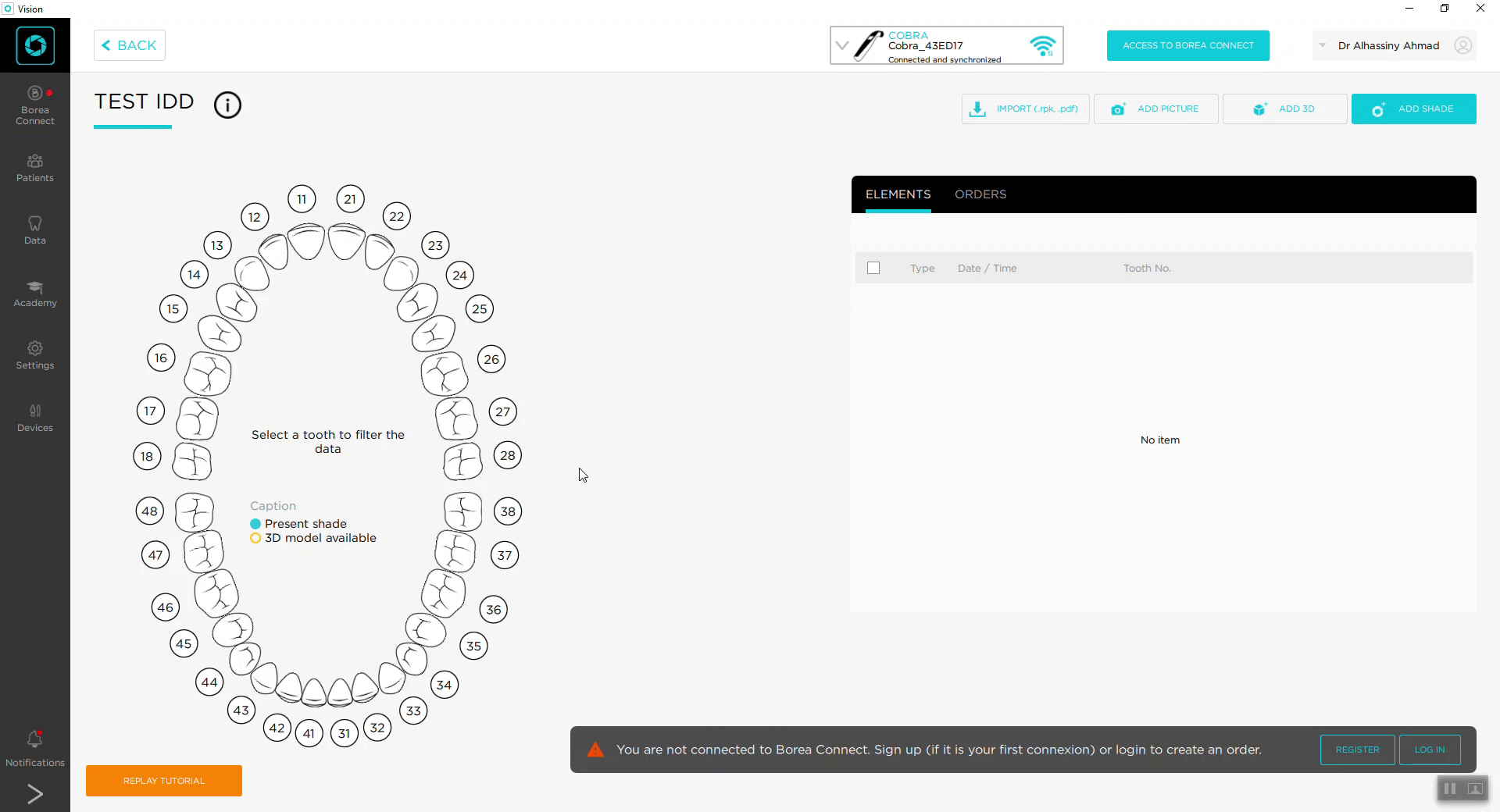
The software is free. When used with the spectrophotometer, it makes it possible to centralize patient aesthetic data (shade analysis, photos, comparison and bleaching reports, etc.). After you take a shade scan, the software automatically marginates the tooth and gives you a shade. As explained above, users can use multiple different shade guides.
Once again, the major advantage of the software is how many options you have when shade taking. I really like the ability from a single picture to see one shade and also gradients. When comparing the software to the Vita Easyshade, which takes point-by-point shades. To get the same gradient, you would have to hold it against the tooth and take 3 arbitrary measurements from cervical to incisal.
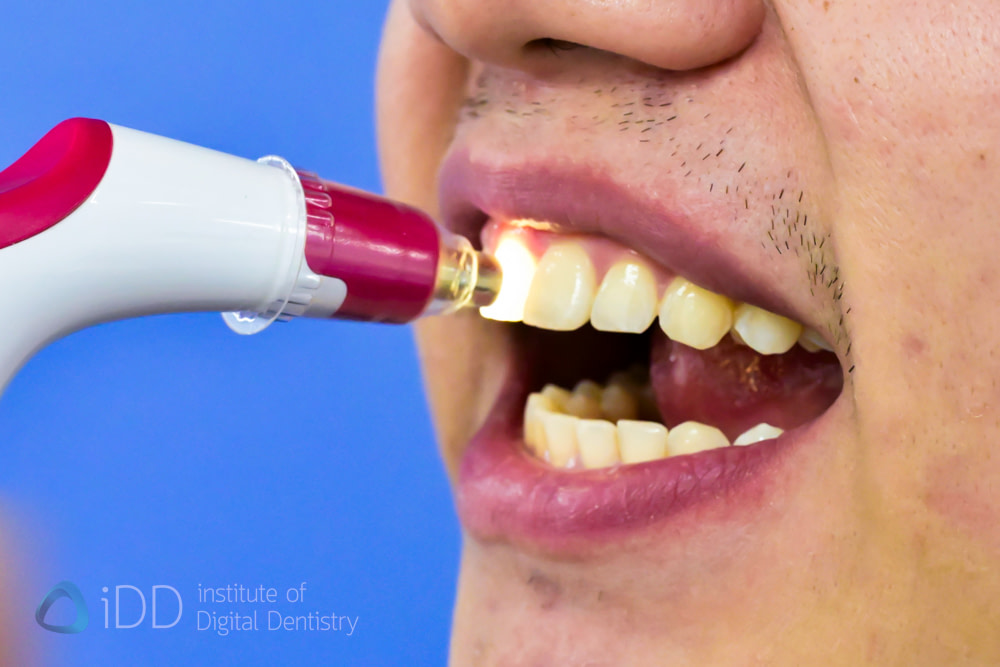
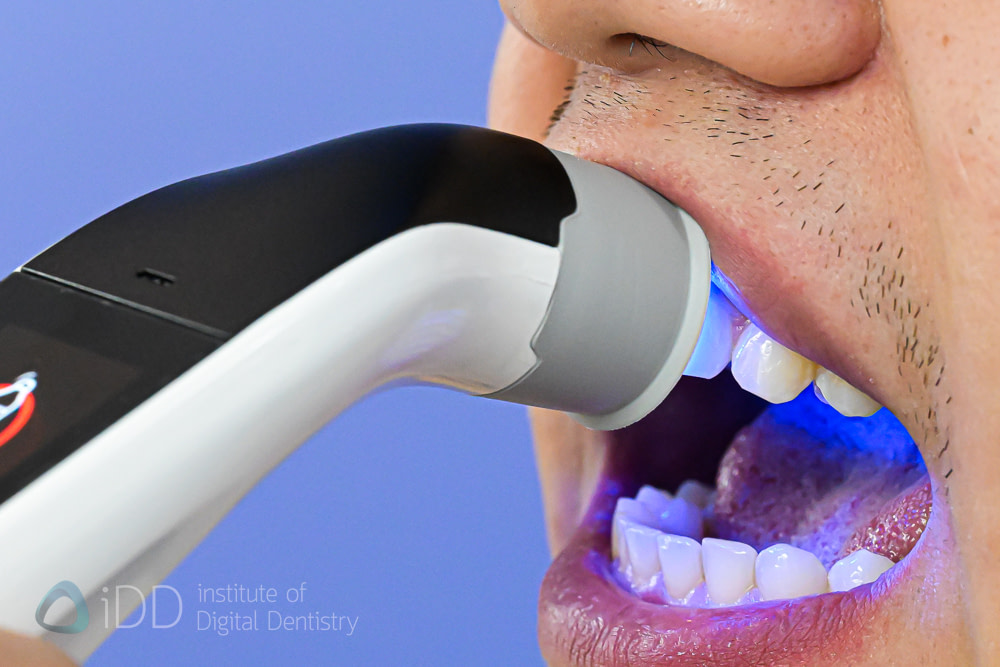
With the Cobra, you can use a single image, a single capture to measure for 1 shade, a 3 shade gradient, stratification, translucency measurements, even real measurements, and easily store and reference them. It really is quite neat.
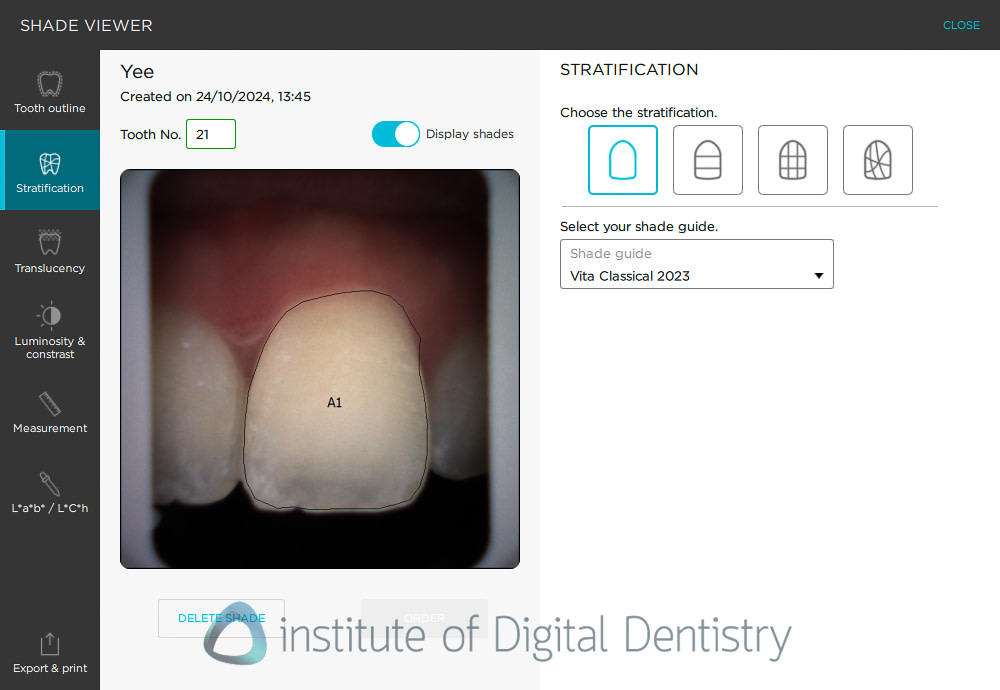
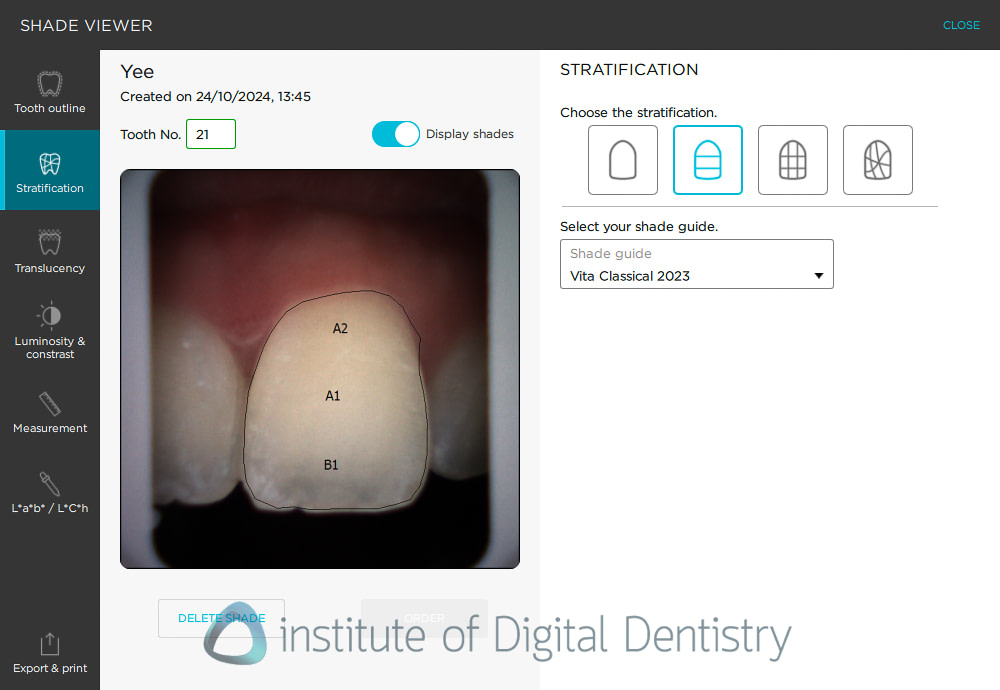

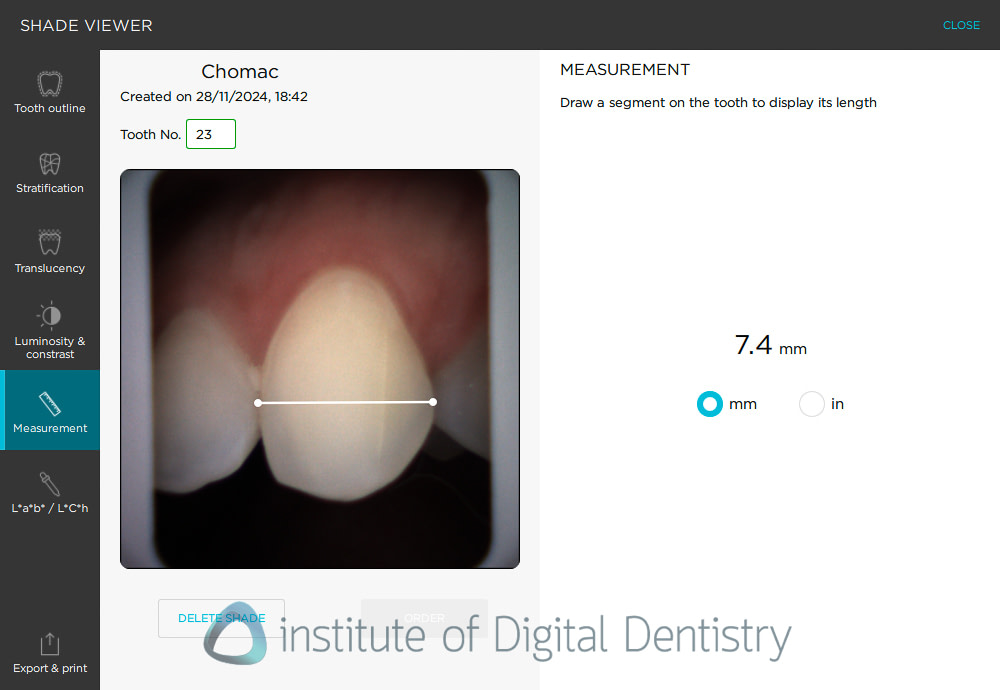
Apart from shade guides, the software has a few different viewing options for the shade:
- Translucency analysis - a gray scale indicates the presence of translucency on a scale from 0% to 100%.
- Black and white analysis - converts the color polarized gradient to grayscale
- CIE L*a*b* / L*C*h analysis - determine pixel-by-pixel color coordinates according to CIE L*a*b* or L*C*h standards.
There is also the Borea Connect software, which is a free platform for creating and managing orders for both dental practices and labs. This allows easy sending of shade matching data and lab prescriptions with shades, patient photos and digital impression all in one place. This platform is web-based to allow accessibility from any internet browser on a computer, smartphone or tablet.
Lastly, there is also the Borea Academy within the software which links to a webpage with various webinars, tutorials, studies and resources.
Does it actually work?
In my experience, the BOREA Cobra was overall accurate and, more importantly, consistent when taking the same measurement. I actually really enjoyed using it.
I have not personally used every shade-matching tool available, but I compared the BOREA Cobra to the VITA Easyshade and also the shade matching capabilities of every intraoral scanner on the market, including DEXIS 3800, TRIOS 5, TRIOS 3 and Medit scanners.
The Cobra was arguably the best and something I could see myself using in the clinic, primarily thanks to its easy and fast shade-taking and also because it gave me confidence in the results.
Firstly, I tested my own teeth. I know my tooth shade is B1. And it got it right every time. Even the Vita Easyshade said I have A1. Ouch. But on a serious note, it was precise in its shade detection capability.
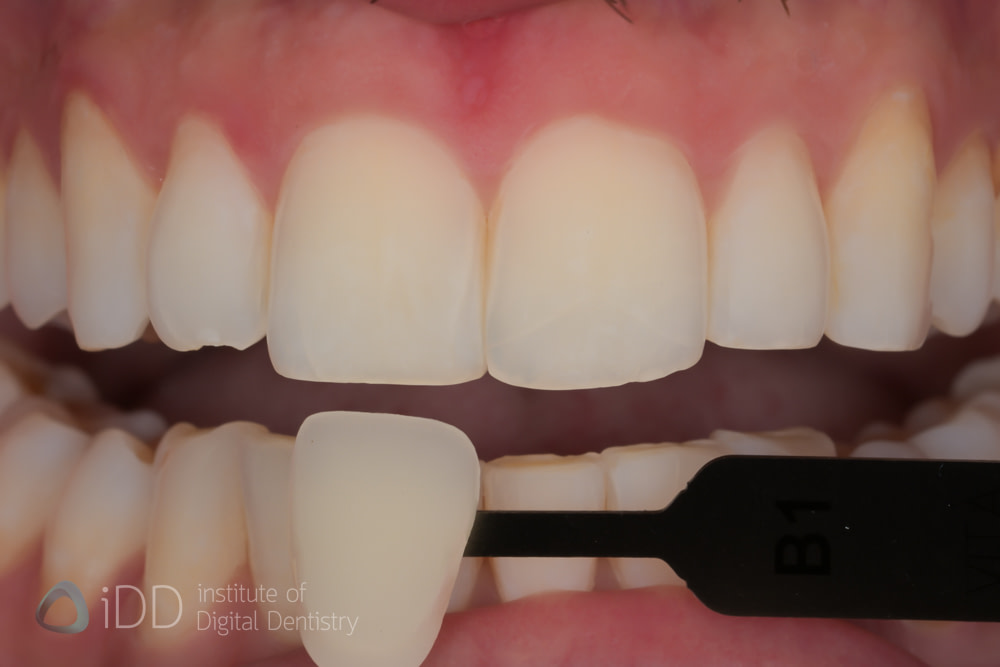
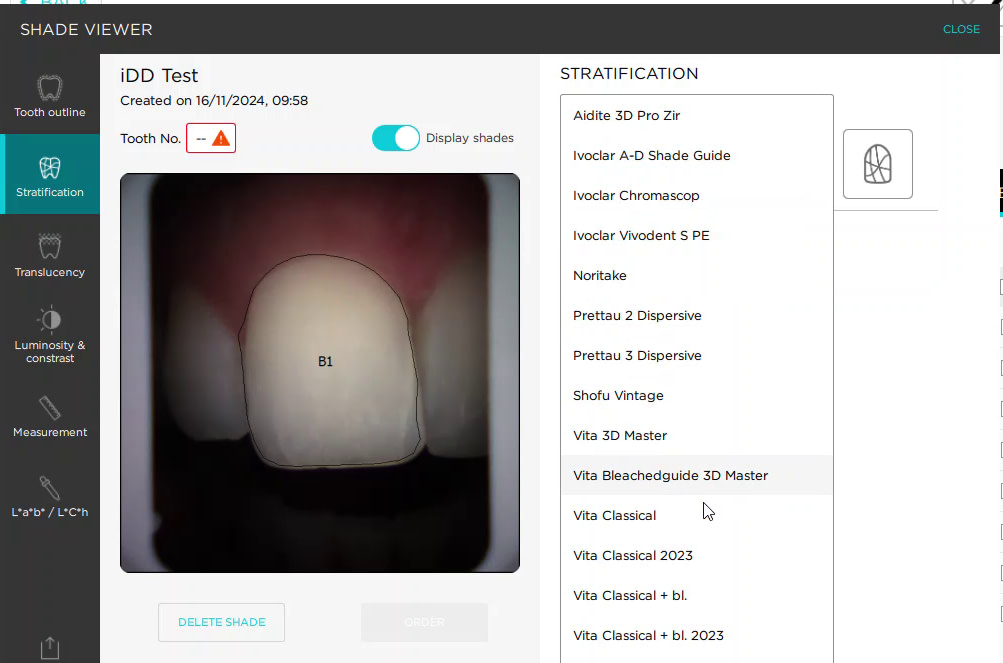
Correct shade by the Borea Cobra confirmed manually.
I also did several tests on a VITA Classic shade guide using all the devices I have access to + the BOREA Cobra in the same room, under the same lighting conditions. That will be a whole different post, but again, the BOREA Cobra was in my experience the best. It correctly identified each VITA shade tab, except 1-2, which is something not even the VITA Easyshade seemed to do.
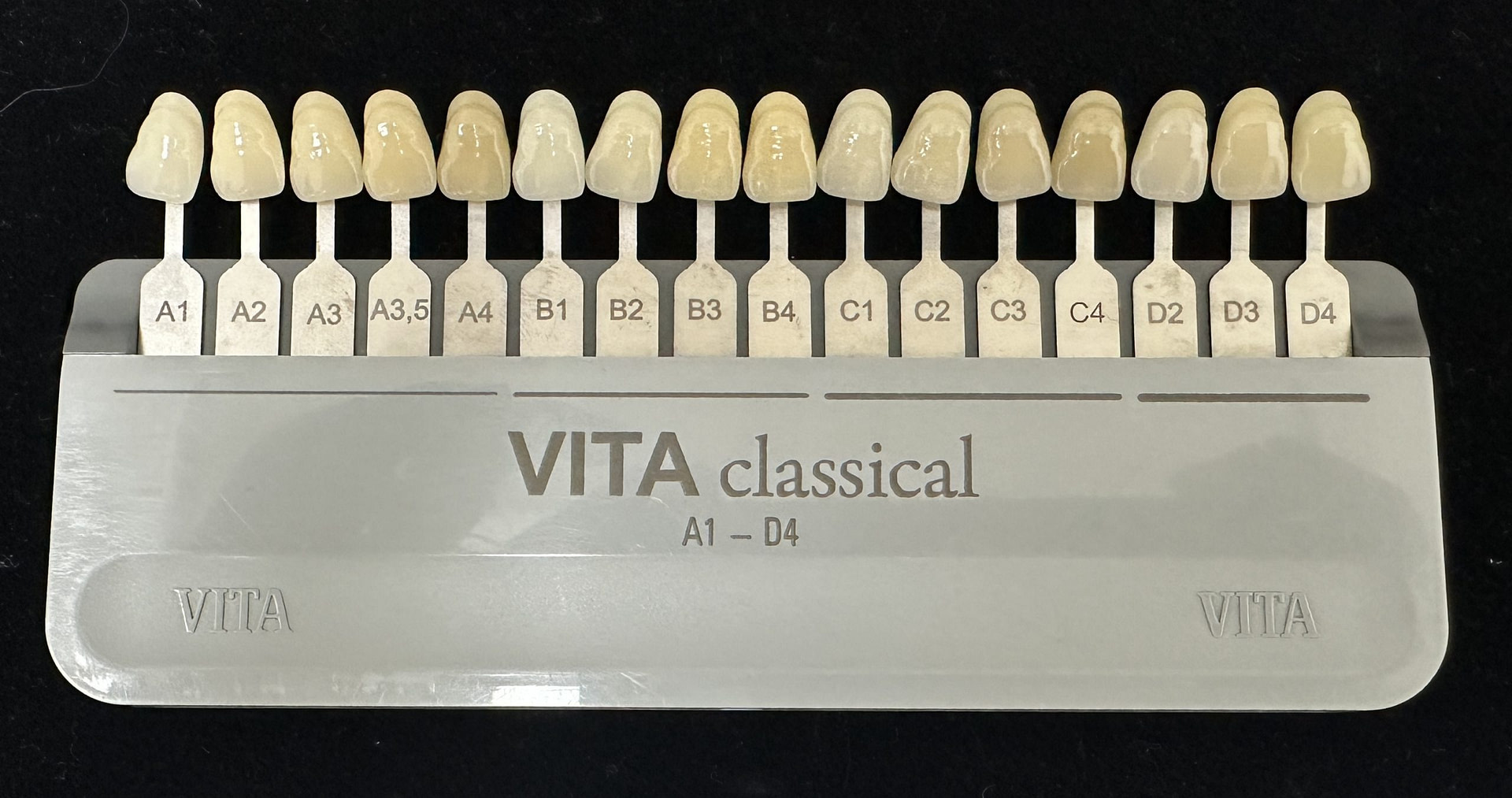
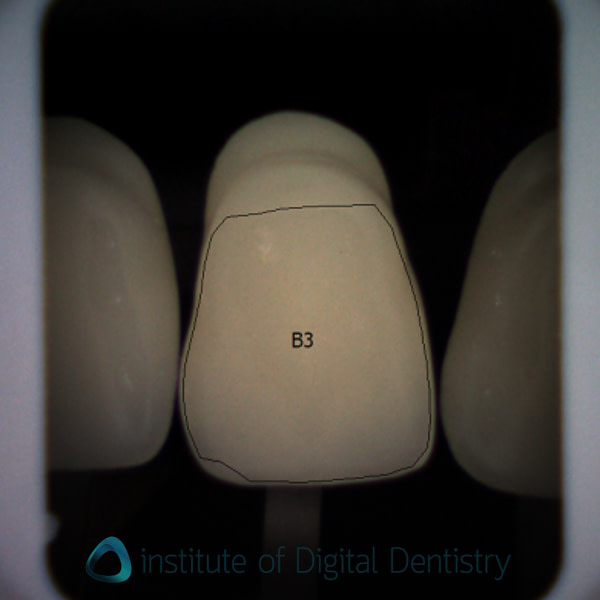
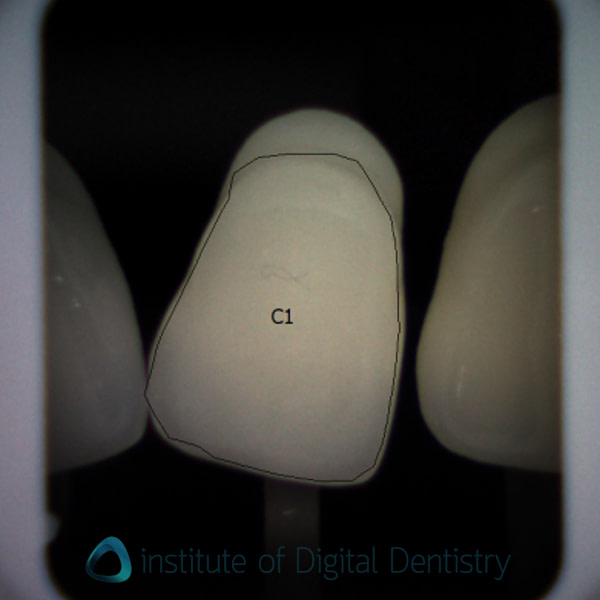
Not just shade guides, the COBRA also seemed to be accurate with its measurements and the automatic gradient presentation of the shades across the tooth. Even when scanning porcelain in the mouth.
Recently, a patient visited our practice who had 12-22 anterior crowns done elsewhere. The left lateral crown broke off. So I took a shade measurement using the BOREA Cobra of the right lateral incisor crown. It said A2, so milled an A2 e.max restoration in-house and the shade came out great. It can also take stump shades - pictures below.
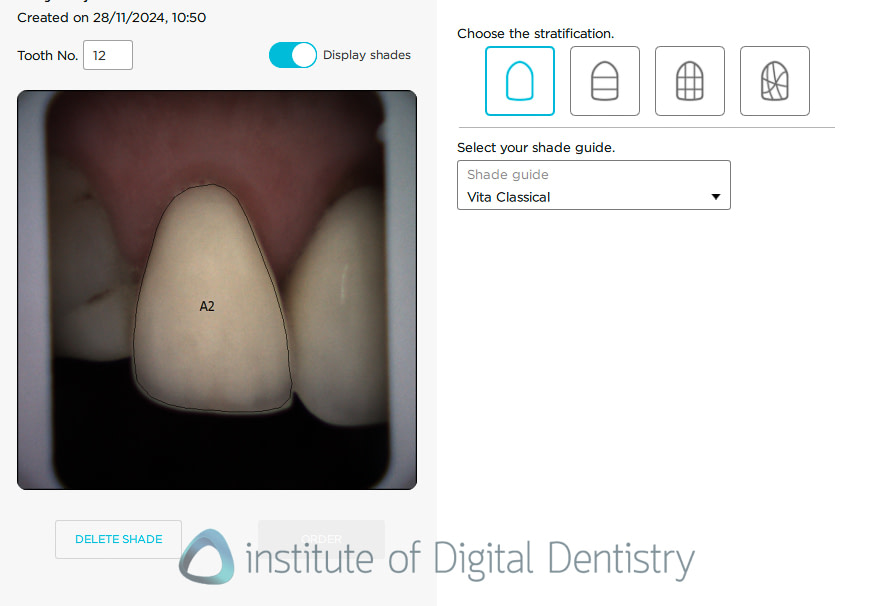
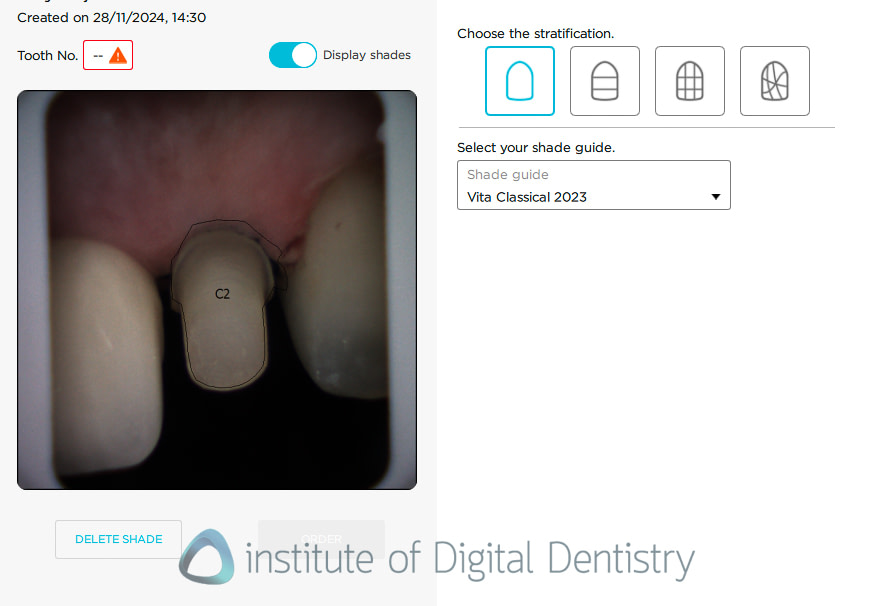
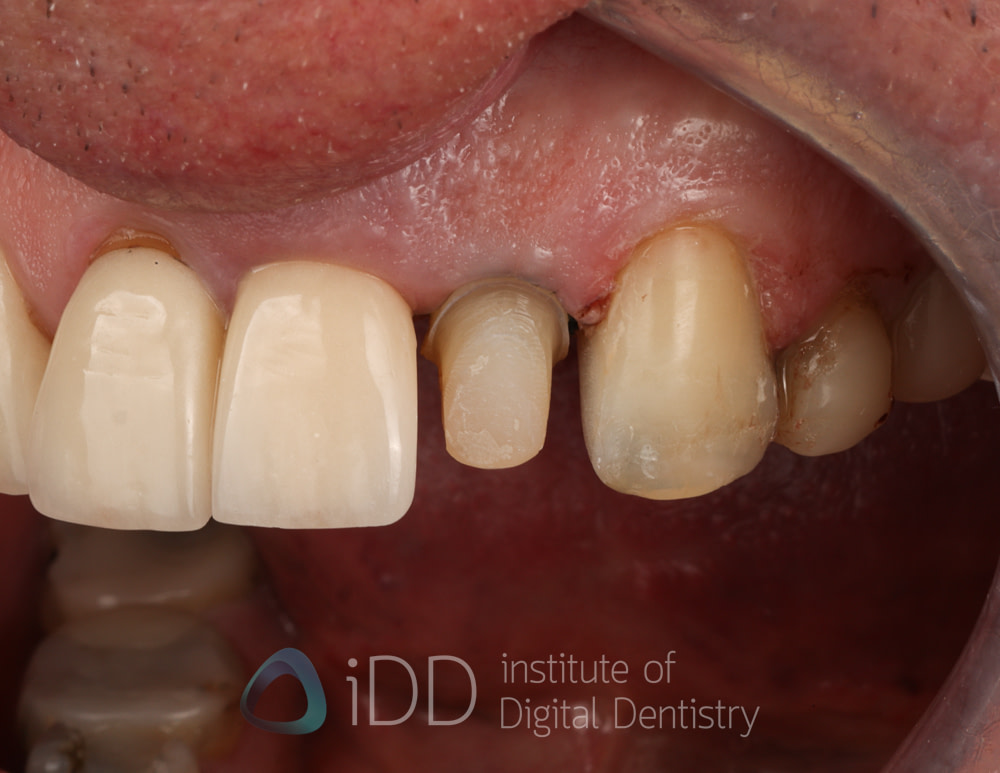
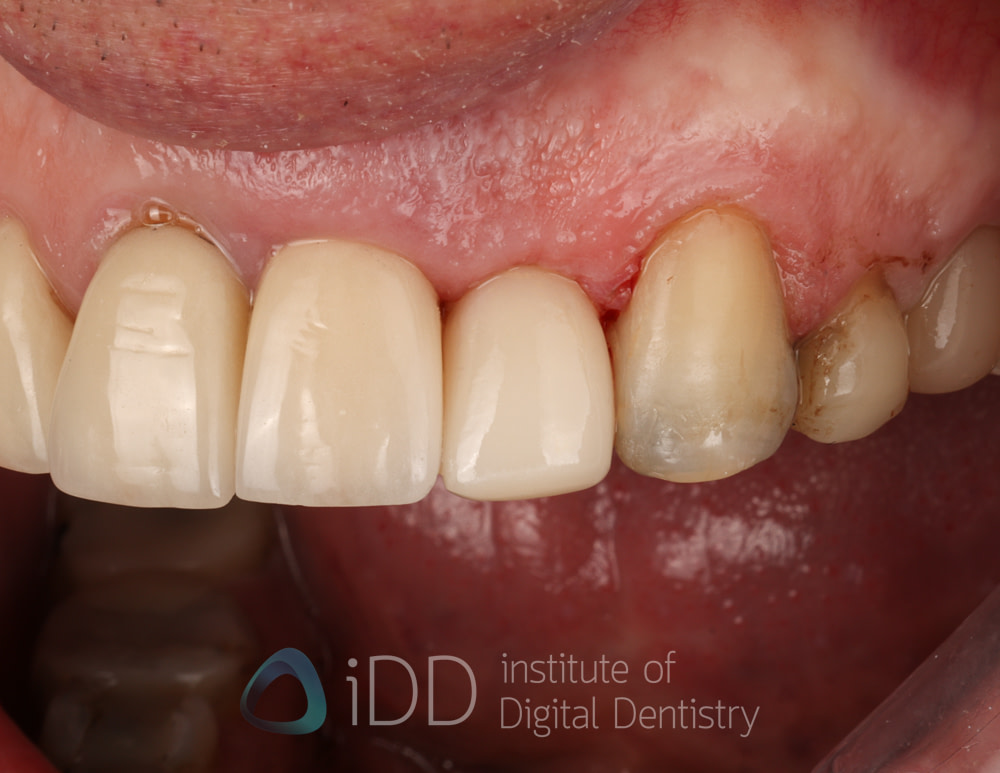
The cost of the BOREA Cobra?
A Cobra Pack recommended retail price (RRP) is 2900 € / USD excluding taxes.
At this price it is the most expensive shade-matching unit on the market right now.
This price includes:
- The Cobra spectrophotometer + docking station
- Dongle for wireless use
- Power adaptor & USB C cable
- Scanning Tips x6 (sterilizable)
- Disinfection and sterilization procedures + quick start guide
- Microfiber cloth
- Free software (unlimited users, no subscription and free updates)
- Access to the Borea Connect platform (dentist and labs communication portal).
The only ongoing cost you need to consider is the scanning tips or what the company calls 'calibration' tips. These are autoclavable up to 100 times and if you need a new one, the RRP is 66 EURO/USD excluding taxes for a batch of 6 pieces. In other words, 11 USD per tip or 11 cents per patient scan. There are no other ongoing fees or subscription costs.
Although it is nice to have in the clinic and I have enjoyed using it, I wonder if a product like this will become widely adopted.
The reason I say this is for one the cost. At close to 3,000 USD, this makes it a decent investment. Secondly, clinicians may feel they are perfectly fine eye-balling shades and using standard shade guides. It is hard to break that. I imagine the same way it is hard to get clinicians that place implants to adopt guided surgery vs. freehand, even though the vast amount of literature says it is better.
I have little doubt in my mind, however, that a device like this can take the guess-work out of shade-matching and it seems like a well-engineered and carefully thought-out device.
Who is this for?
The Borea Cobra seems to cater to both clinicians and dental techs. Dentistry is going digital, and this is another tool in the arsenal. The aesthetic demands of patients may lead clinicians to consider the purchase of a spectrophotometer. This applies to anything from composite veneers, porcelain, smile designs, bleaching treatments, etc.
For dental technicians, this may be helpful too. Spectrophotometers may help standardize the manufacturing process and help control the quality of the work carried out. Spectrophotometers can also be helpful when trying to match a shade to an existing restoration.
For dentists, I see a few primary uses of a shade-matching tool:
- Bleaching treatments - shade matching tools provide an objective way to motivate patients, quantify shades of teeth and prove the results of treatment.
- Fixed and removable prosthodontics - self explanatory use for shade-matching tools. They provide an objective way to measure the shades of teeth.
Pros of the BOREA Cobra:
- High Accuracy:
- The Cobra seems to offer precise shade matching. This may help reduce the chances of mismatches in restorations, crucial for aesthetic outcomes. The fact it also gives you a range of shade guides to choose from is nice.
- User-Friendly Interface:
- With a touchscreen display and intuitive navigation. It is easy to use. I will say that the setup with the Wi-Fi dongle provided could have been better. But once it's connected, it's easy to use.
- Portability:
- Its lightweight and compact design makes it easy to handle and transport, suitable for both in-office and mobile dental practices.
- Fast Measurements:
- Quick shade assessments allow for efficient workflows. I could see myself incorporating this in aesthetic cases.
- Versatile Measurement Modes:
- Multiple measurement options (single tooth, shade guide comparison, gradient, translucency etc) enhance its utility in different clinical scenarios.
- Rechargeable Battery:
- Long battery life and USB charging provide convenience in day to day use.
Cons of the BOREA Cobra:
- Initial Cost:
- The upfront investment for the Cobra may be too significant for practices, potentially making it less accessible for some dentists. Especially if they consider this a 'nice to have'.
- Learning Curve:
- While designed to be user-friendly, some users may still require time to become proficient with all its features and functions. The set-up, as mentioned above, could be better. Thankfully, the pairing has to be done once only. The device will then automatically detect and synchronize.
- Requires software to work
- This is not a huge con and to be honest the software is great. But I would have really loved it if the BOREA Cobra had the option of taking a quick shade and showing it on the OLED screen rather than always requiring a connection to software to work. Although in saying that, I also appreciate the ability to make patient files and properly store shades and images for future reference.
Conclusion
The BOREA Cobra presents a significant advancement in the dental shade-matching market, offering a modern, digital-focused and precise alternative to established devices like the VITA Easyshade.
Its high accuracy, user-friendly interface, and comprehensive software integration make it without a doubt a valuable tool for clinicians and dental technicians seeking consistent and objective shade measurements.
The ability to capture spectral data across the entire tooth and provide detailed gradient maps sets it apart from many competitors, and the software is by far the most sophisticated while also being quick to take shades - within a few seconds.
However, the Cobra is not without its drawbacks. The initial cost may deter some practices, especially those that view shade-matching devices as supplementary rather than essential. There is a learning curve associated with the device's setup and advanced features, but this is quickly overcome in my experience.
Comparing to Easyshade or shade-matching carried out by intraoral scanners, the BOREA Cobra seems better in many ways. Accuracy, usability and the software are standout features.
In the broader context of the shade-matching device market, the Cobra offers an interesting blend of innovation and functionality, filling a niche that has seen limited progress since the early days of digital dentistry.
For practices prioritizing aesthetic outcomes and standardization, it could represent a worthwhile investment. Whether it gains widespread adoption will depend on how dental professionals perceive its value compared to traditional methods and existing devices.


Hi Ahmad, ive been using this for 4 years already at Avant .They added the Aidite 3dpro guide for me after much badgering ,beware i have a few issues with certain shades but that’s not unusual. Totally agree about the cost being restrictive for most ( bad luck for them). Great review mate as always see you soon
Thanks for the kind words!